Сообщение Kaiser Wilhelm II and Tsar Nicholas II, 1905 появились сначала на Old Pictures.
]]>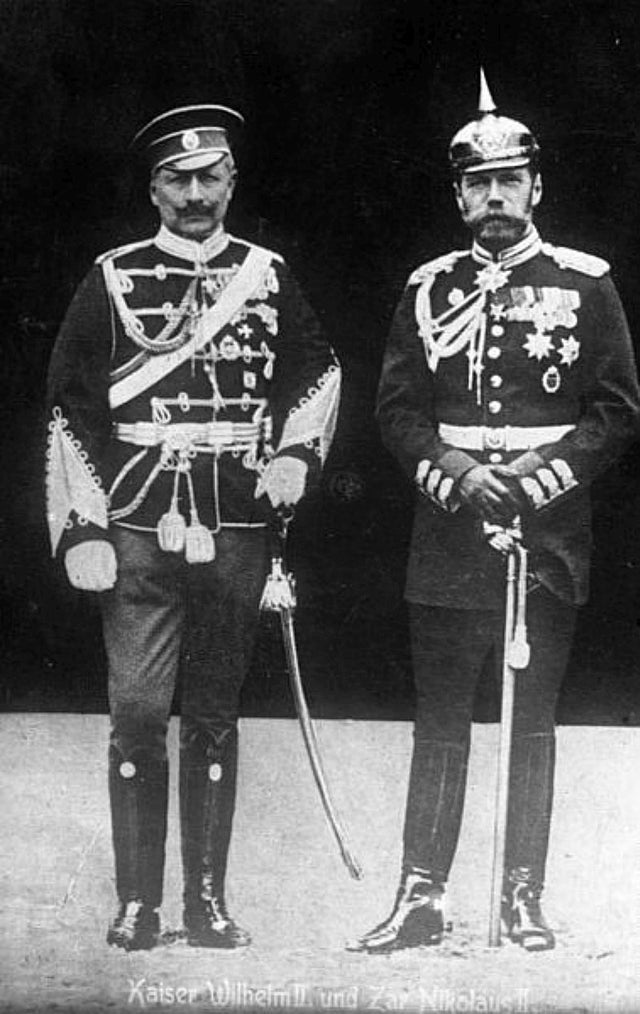 In this photo German and Russian Emporors, Kaiser Wilhelm II and Tsar Nicholas II, wearing each others’ uniform. They met on the russian ship Polar Star in summer of 1905, trying to sign a new treaty. We were missing Nicholas II in this picture of Nine European kings.
In this photo German and Russian Emporors, Kaiser Wilhelm II and Tsar Nicholas II, wearing each others’ uniform. They met on the russian ship Polar Star in summer of 1905, trying to sign a new treaty. We were missing Nicholas II in this picture of Nine European kings.
Kaiser Wilhelm II initiated that negotiations trying to create a bloc of states against England. Relations between Russia and England at that time were hostile. Here’s why Nicholas II accepted this proposal of the German Emperor.
Emperors also had plans to induce France to join the alliance.
Russian ruler signed the agreement with Wilhelm II on the island of Bjorke, without notifying the Minister of Foreign Affairs Lamsdorf.
This treaty contradicted Russia’s obligations within the Franco-Russian alliance. And Lamzdorf managed to convince the tsar to send William II a soft refusal, citing formal obligations towards France. The treaty was actually annulled by a letter from Nicholas II to Wilhelm II of November 13, 1905.
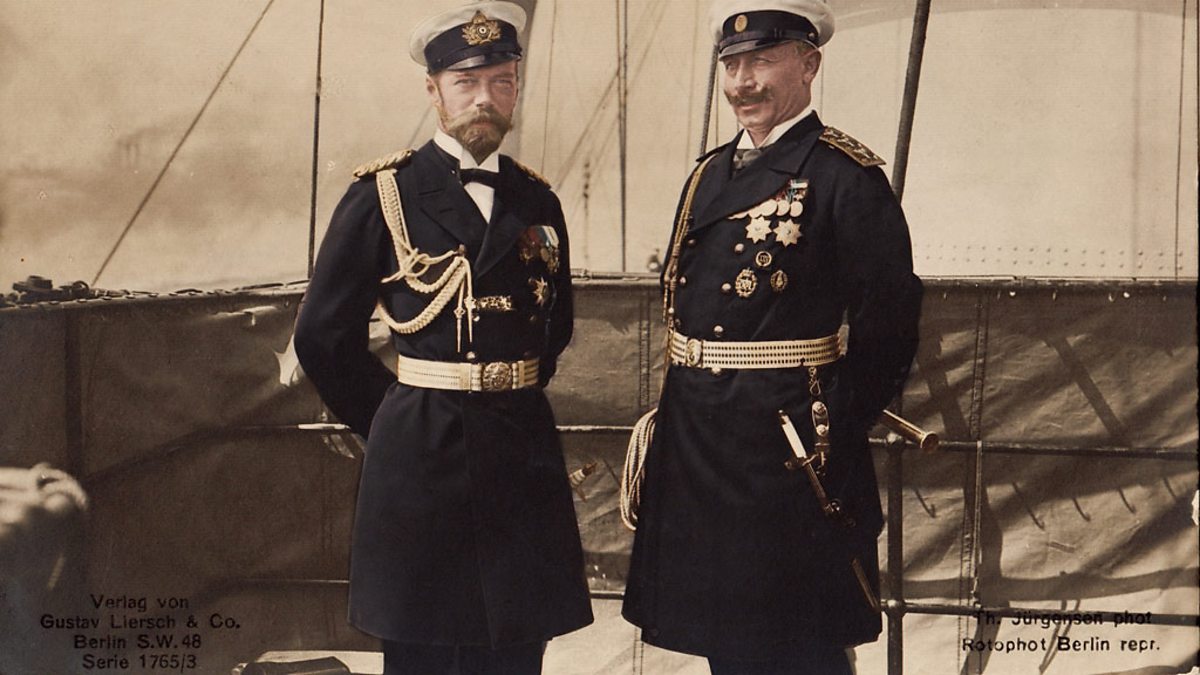
Сообщение Kaiser Wilhelm II and Tsar Nicholas II, 1905 появились сначала на Old Pictures.
]]>Сообщение WWI Christmas truce in 1914: pictures and facts появились сначала на Old Pictures.
]]>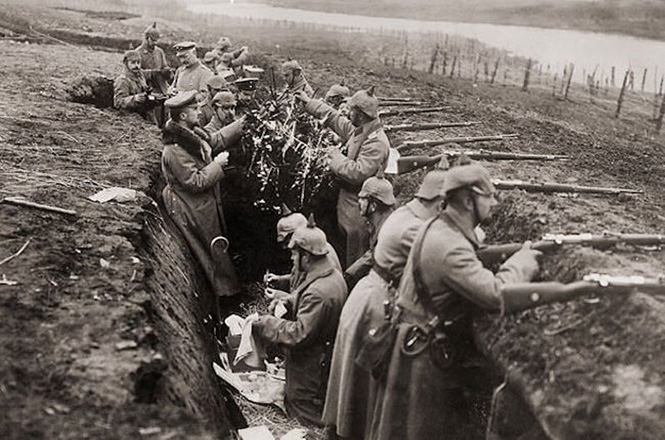 This fascinating story of the Christmas Truce of 1914 started on December 24, when the British watch noticed that the Germans were installing Christmas trees on their trenches’ parapet. Brits used to see machine guns there!
This fascinating story of the Christmas Truce of 1914 started on December 24, when the British watch noticed that the Germans were installing Christmas trees on their trenches’ parapet. Brits used to see machine guns there!
How the Christmas truce of 1914 became possible
Later reporters will call it a WWI Christmas truce of 1914. Of course, the decorations were primitive as they can be during wartime. The sparkling copper leading belts from shells decorated the Christmas trees. Garlands replaced bandages and telegraph tapes.
Read more: 100 most important pictures in history
But the fact itself did not fit in with the atmosphere of the hopeless massacre that had prevailed here for the past few months! Very soon, Brits heard the German Christmas song, Stille Nacht.
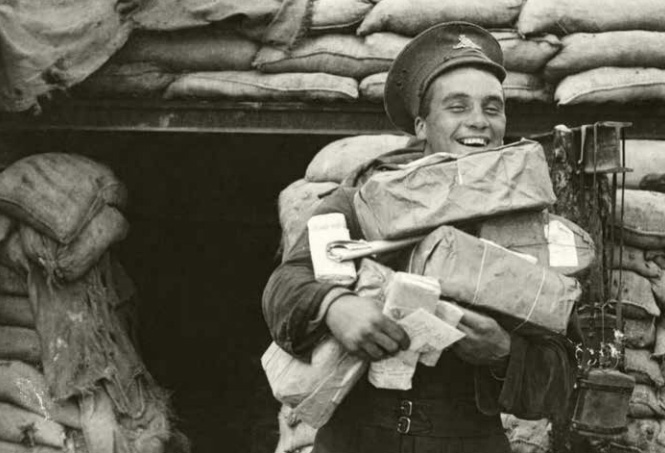
The British soldier is going to the no-man land to exchange Christmas gifts.
The shooter of the Royal Scottish Guards Graham Williams recalled that evening much later:
I was in the trench, watching the German line of defense. I was thinking about how different this holy night was from those that I had before … When suddenly lights appeared here and there near the German trenches. The light came from the candles lit on Christmas trees. The candles burned evenly and brightly in the calm and frosty evening air. Other sentries rushed to wake the sleeping people. “Look what is happening!”
And at that moment, the enemy began to chant Stille Nacht, Heilige Nacht. In fact, it was the first time I heard then this hymn, which was not so well known in our country. The Germans finished singing, and we thought we had to respond with something. And we sang the psalm First Nowell, and when we finished, there was friendly applause from the German side. They followed with another Christmas song, beloved by the Germans – O Tannenbaum. The Kaiser’s soldiers began to go out to the neutral zone with exclamations: “Merry Christmas, British!” They carried gifts in their hands instead of weapons.
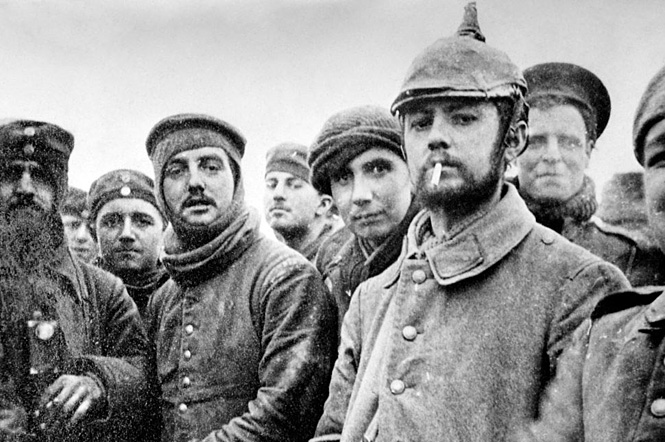
WWI Christmas truce in 1914
Here’s how the Germans and the British soldier began to go out to no man’s land to celebrate WWI Christmas truce of 1914. An English officer recalls:
I looked out of the trench and saw four German soldiers emerging from their trenches and heading in our direction. I ordered two of my men to meet the “guests”, but without weapons, since the Germans were not armed. But my guys were afraid to go, so I went alone. When the Germans approached the barbed wire, I saw that they were three privates. One of them said in English that they only want to wish us a Merry Christmas.
I asked what order the Germans received from the officers since they walked in our direction. They replied that there was no order, they went without permission. We exchanged cigarettes. When I returned to the position, the trenches were empty. I was surprised to find a crowd of 100-150 British and German soldiers. They laughed and celebrated. After a while, I noticed two German officers and through an interpreter told them that they should meet in a no man’s land and without weapons. One of the enemies admitted that he dreamed of an imminent end to the war, and I agreed with him.
Exchanging the Christmas gifts in the trenches
The soldiers of both armies received Christmas parcels from home. They could exchange small gifts: food, tobacco, various alcohol, even buttons, and hats were used. More than one hundred thousand Germans, British and French along the entire Western Front, stopped killing each other that night. Right between the lines of the trenches, the military priests performed the Christmas service.
Instead of organs of city cathedrals, soldiers sang. Former enemies together collected and buried the bodies of the killed, decomposed for months in funnels. They performed funeral services and prayers together.
In some front sectors, the truce lasted only one night, but in some places, the WWI Christmas truce of 1914 lasted a week until the New Year. It turned out that propaganda clichés are inexpensive: having started to communicate, the “Hans” and “Tommy” quickly realized that their opponents were not all the fiends from hell. Hatred disappeared, giving way to the friendliness of people in an equally bad situation.
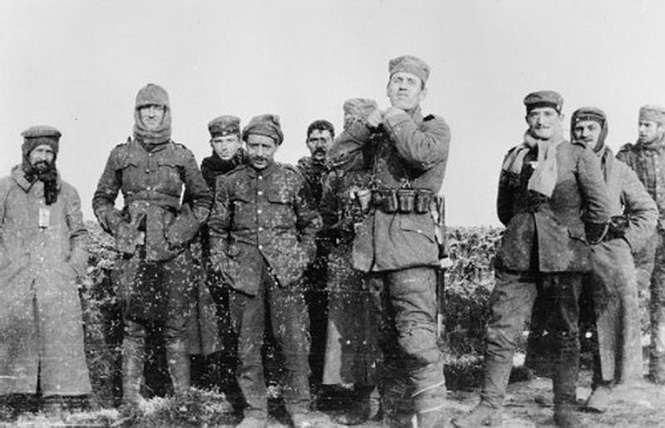
The Christmas of 1914 at Ypres
The football match during the Christmas truce
After the nightly Christmas services and the exchange of gifts, the miracles continued on the very day of Christmas. The soldiers came out of the trenches again and began to play football in the no-man land!
The bars of the gate were stakes in the ground. A stew can could serve as a ball. Each team could have an arbitrarily large number of players: no one really cared about the rules.
Ironically, the soldiers played football near Ypres’s town, which will give a name to the most deadly gas of WWI. The Yperite gas, or the Mustard gas, was dangerous because no WWI gas mask could stop it.
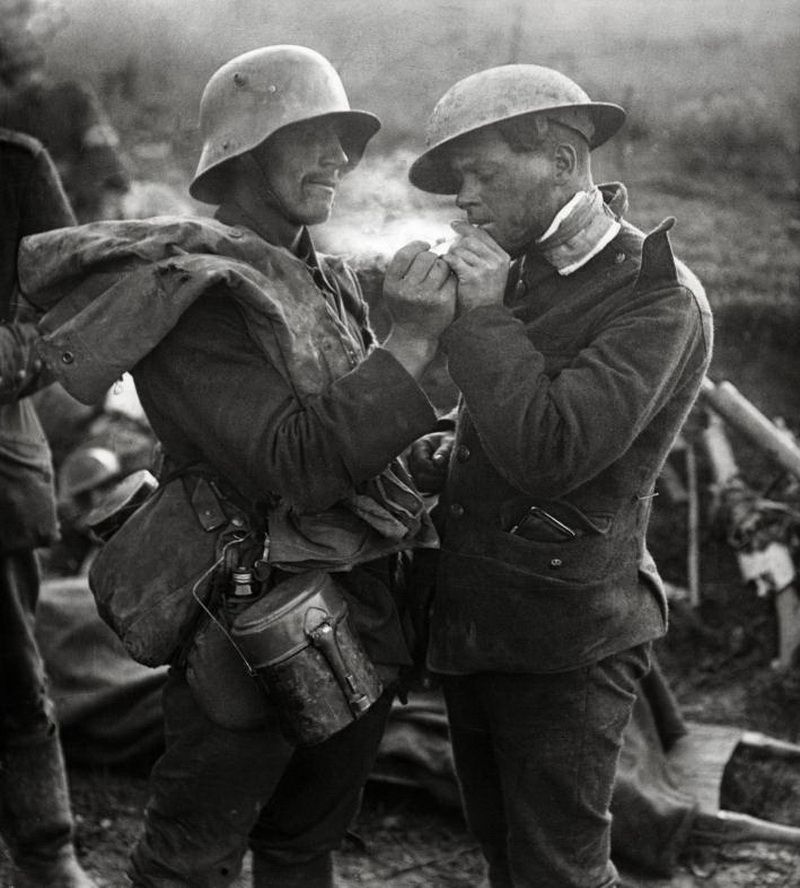
German and British soldier during the Truce
The punishment
When information about the soldier’s willfulness reached the authorities, the reaction on the WWI Christmas truce of 1914 was immediate. The guilty were punished, and the fire began. The commander of the British II Corps, General Horatio Smith-Dorren, issued an order prohibiting any communication with the enemy. The commander of the Scottish Guards, Sir Ian Calhoun, was nearly shot for “aiding the enemy.” Only the personal intervention of King George V saved an officer. The King considered it unethical to shoot a knight and a relative of his prime minister.
By the way, some germans expressed dissatisfaction with the “outrageous” fact of fraternization with the enemy. The little known corporal from the 16th Bavarian Reserve Infantry Regiment was the one among them. Corporal’s name was Adolf Hitler.
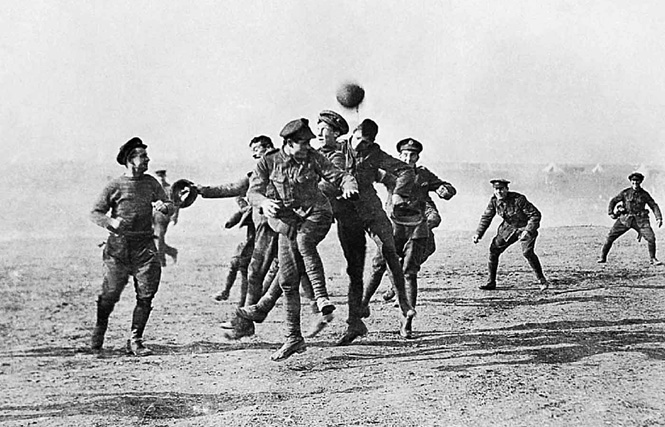
Soldiers playing football during WWI Christmas truce in 1914
They tried to hide the Truce.
For almost a week, governments and military censorship managed to hide information about the unauthorized Christmas truce in 1914. But still, the truth soon surfaced: the New York Times reported on an unusual event, and in early January, the British Daily Mirror and Daily Sketch reprinted American photographs.
Governments tried to suppress any attempts to reconcile the soldiers on major Christian holidays in advance. Since 1915, the British artillerymen were ordered to increase the intensity of German positions on the eve of Easter and Christmas.
Commandant reshuffled units in different sectors of the front in order to prevent the establishment of any comradely ties with the Germans. There was no more such a Christmas truce as it was in 1914.
Сообщение WWI Christmas truce in 1914: pictures and facts появились сначала на Old Pictures.
]]>Сообщение German WWI submarine UB122 that spent 92 years underwater появились сначала на Old Pictures.
]]>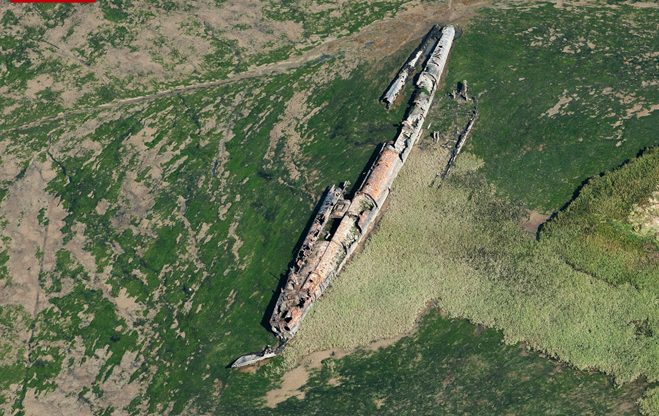 This decrepit german WWI submarine appeared on the surface 92 years after the last dive. We guess that if this U-boat UB122 were looking for a new job, its resume would have been extremely short. It left the shipyard of the Bremen in February 1918. And its career was over in November of the same year, with no combat record.
This decrepit german WWI submarine appeared on the surface 92 years after the last dive. We guess that if this U-boat UB122 were looking for a new job, its resume would have been extremely short. It left the shipyard of the Bremen in February 1918. And its career was over in November of the same year, with no combat record.
Another German submarine trophy
The end of the story of this German WWI submarine wasn’t heroic in any way. The vessel, which never fired any of its ten torpedoes, was handed over to the British, who decided to melt it down. However, upon entering the Thames estuary, the towing ropes collapsed, and the submarine suddenly sailed away. The escape ended at the swampy coast of Kent.
And yes, we remember that this German WWI submarine ended its days just like UB122, but at a different British shore.
It’s time to go up!
The history of this submarine surfaced at the end of 2013. Strong December tides pulled the boat closer to the shore.
Historians identified the submarine only after its inspection. According to archival records, in total, six German submarines were lost during the towing! Three of them – U122, U123, and UB122 – all this time were hiding somewhere in the local shallows.
Three British and 41 German boats sunk during WWI around this British coastal area.
Read more: Torpedo sticks out of a Soviet submarine, 1989
WWI is usually called the ‘first modern war’ – and the naval war. Many technologies were used for the first time. U-boat tech was one of them. Effective submarine combat was an especially new aspect of war. Germany concentrated on U-Boat production to fight the greater British flotilla and put pressure on its Atlantic units. German submarines had a massive surprise effect during the first years of WWI.
Сообщение German WWI submarine UB122 that spent 92 years underwater появились сначала на Old Pictures.
]]>Сообщение WWI German submarine on the beach появились сначала на Old Pictures.
]]>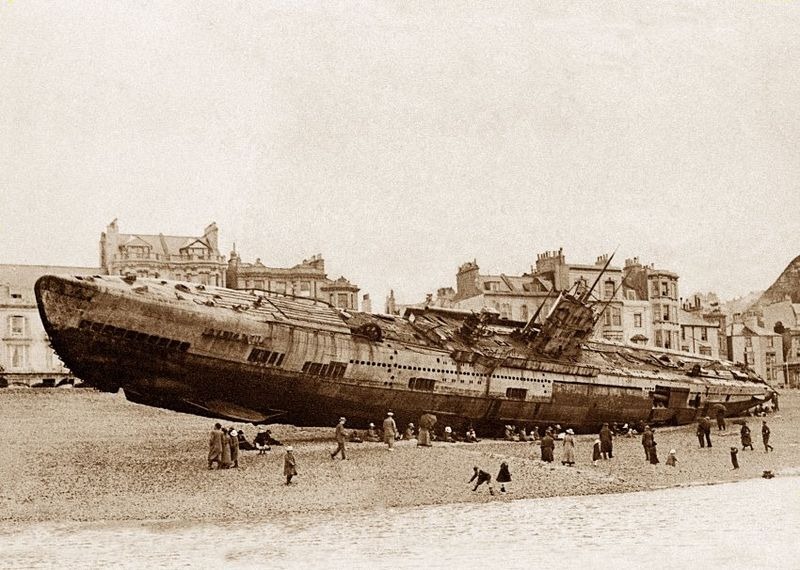 The German submarine SM U-118 barely participated in WWI. It touched the Baltic waters in February 1918 and had a short but bright life. This German submarine managed to make one effective appearance during WWI’s sea battles and sink two ships of the Entente.
The German submarine SM U-118 barely participated in WWI. It touched the Baltic waters in February 1918 and had a short but bright life. This German submarine managed to make one effective appearance during WWI’s sea battles and sink two ships of the Entente.
After the end of the war, France took control over the SM U-118. Nonetheless, U-boat didn’t reach the French shore. While a French ship was towing it, the cable broke, and the boat was carried to the beach near the British resort of Hastings.
Read more: Ernest Hemingway recuperating after his injury during WWI.
As you may guess, the WWI German submarine’s appearance on the beach of a small brit town was a major event for locals. So the boat became the main city attraction. The local authorities even organized paid excursions inside the sunbathing submarine. Army engineers dismantled U-boat only in 192. But the residents of Hastings still store various parts of the SM U-118 in their houses. Well, some submarines, like this Soviet one, live a really bizarre life.
The crucial role of the German submarines in WWI
Submarines were the deadliest weapon in the Germans’ hands. Their submarine was much more advanced than the ones used by Entente forces. The typical U-boat was 214 feet long, carried 35 men and 12 torpedoes. It could stay underwater for two hours, but its speed and maneuvering were limited. Those submarines caused significant damage to British and French fleets during the first period of WWI.
In May 1915, several New York newspapers distributed a notice by the Germany officials. It literally warned Americans not to travel to the UK as it was under the blockade. Interestingly, the statement shared the same newspaper page with an advertisement for the British-owned Lusitania ocean liner’s coming voyage from New York to Liverpool. On May 7, the WWI German submarine sank the Lusitania near Ireland. Of the 1,959 passengers, 1,198 were killed, including 128 Americans.
Сообщение WWI German submarine on the beach появились сначала на Old Pictures.
]]>Сообщение Ernest Hemingway recuperating after his injury during WW1 появились сначала на Old Pictures.
]]>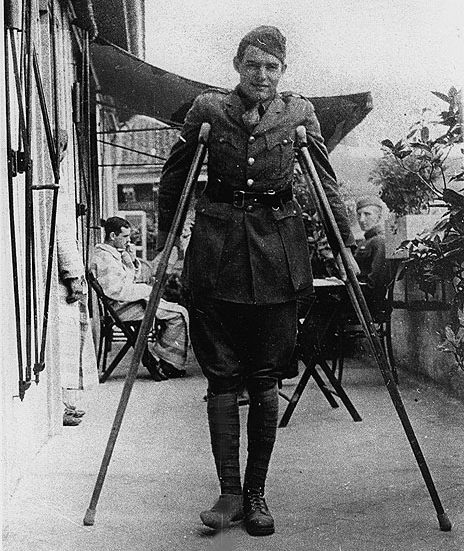 An unknown cameraman captured Ernest Hemingway during rehabilitation after his injury in WW1. A young writer couldn’t stand on his legs in a Hospital of Milan after the mortar fire wounded him.
An unknown cameraman captured Ernest Hemingway during rehabilitation after his injury in WW1. A young writer couldn’t stand on his legs in a Hospital of Milan after the mortar fire wounded him.
Ernest Hemingway participated in WWI as a volunteer. Writer’s war history didn’t mean to be heroic as he served in Italy as an ambulance driver with the American Red Cross. In June 1918, while operating a mobile kitchen distributing chocolate and cigarettes for combatants, he was wounded by an Austrian shell explosion. “Then there was a flash, as when a blast-furnace door is twirled open, and a cry that started white and went red,” Hemingway recalled his injury in a letter home.
Hemingway ignored his wounds and transported an injured Italian officer to safety. He caught another bullet from the machine-guns while doing this heroic deed. Later Hemingway got the Silver Medal of Valor from the Italian Ministry of Defence for this historical episode.
How Hemingway recuperated after injury
Hemingway spent over a year in Europe but he fell in love with the Old Continent. He visited many European countries later, including Italy, Spain, and France, looking for inspiration and new characters for his books.
Hemingway remembered those events later in Men at War: “When you go to war as a kid, you have a high illusion of immortality. Other guys get killed; not you. . . . Then when you catch your bullet for the first time, you lose that illusion, and you know it can happen to you. After being severely wounded two weeks before my nineteenth birthday, I had a bad time until I figured out that nothing could happen to me that had not happened to all men before me. Whatever I had to do, men had always done. If they had done it, then I could do it too, and the best thing was not to worry about it.”
Rehabilitation took long six months in a Milan hospital. During that period, Hemingway fell in love with Agnes von Kurowsky, an American Red Cross nurse. The rumor has it that this Hospital of Milan was full of wine and cats, and injured soldiers spent their time with pets. Who knows, maybe those six months made Ernest Hemingway a famous cat-lover. This romantic event completed the transformation of Ernest Hemingway from a young boy from Oak Park, Illinois, to a different, adult man. WW1 granted him invaluable life experience that included combat and love. Changes in his character were exciting.
Сообщение Ernest Hemingway recuperating after his injury during WW1 появились сначала на Old Pictures.
]]>Сообщение The Chicago race riots of 1919 in pictures появились сначала на Old Pictures.
]]>Some pictures show the horrible scenes of dead body removals (Chicago riots of 1919 resulted in 38 deaths and 500 injuries). Other photos captured the policemen and national state guards that tried to bring order to the streets. Some pictures are just rare snapshots of Chicago’s dwellers who attempted to survive the chaos of the civil protests.
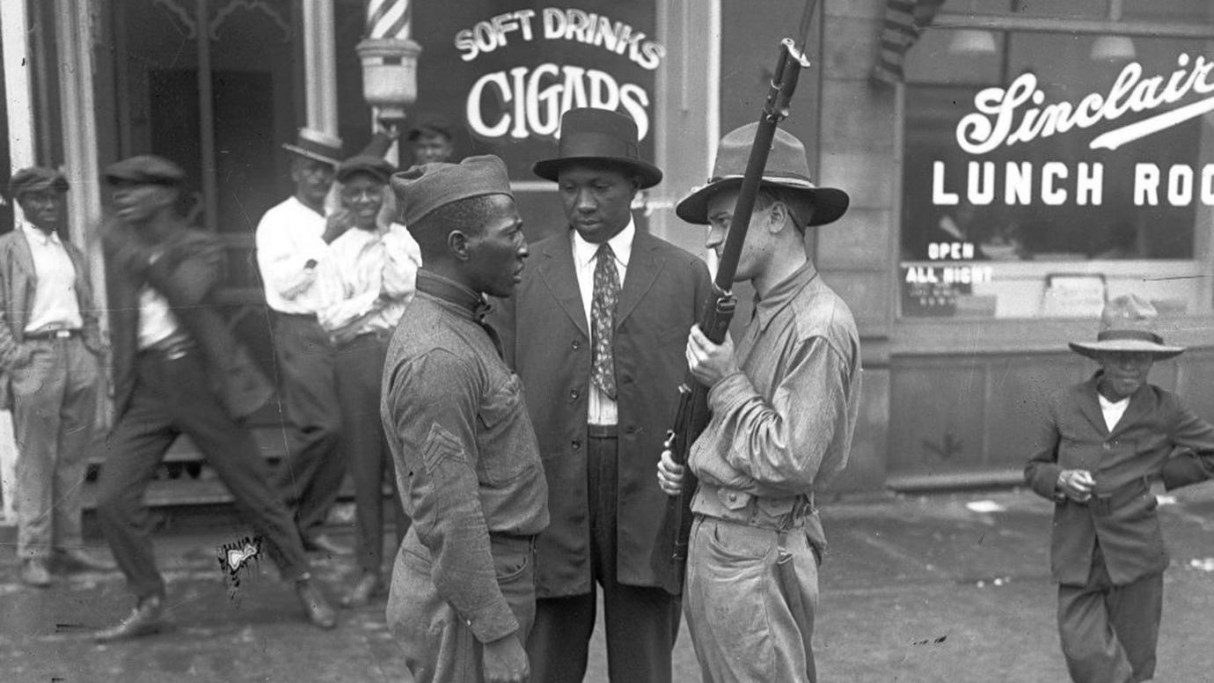
Chicago entered the 20th century with a variety of hostile factions. More than 1,300 gangs roamed across the city, taking control of the whole districts. Those gangs were organized ethnically. Some of the bands had funny names that refuted their harshness: One Italian squad called itself the Onions, while a black one was known as the Twigglies.
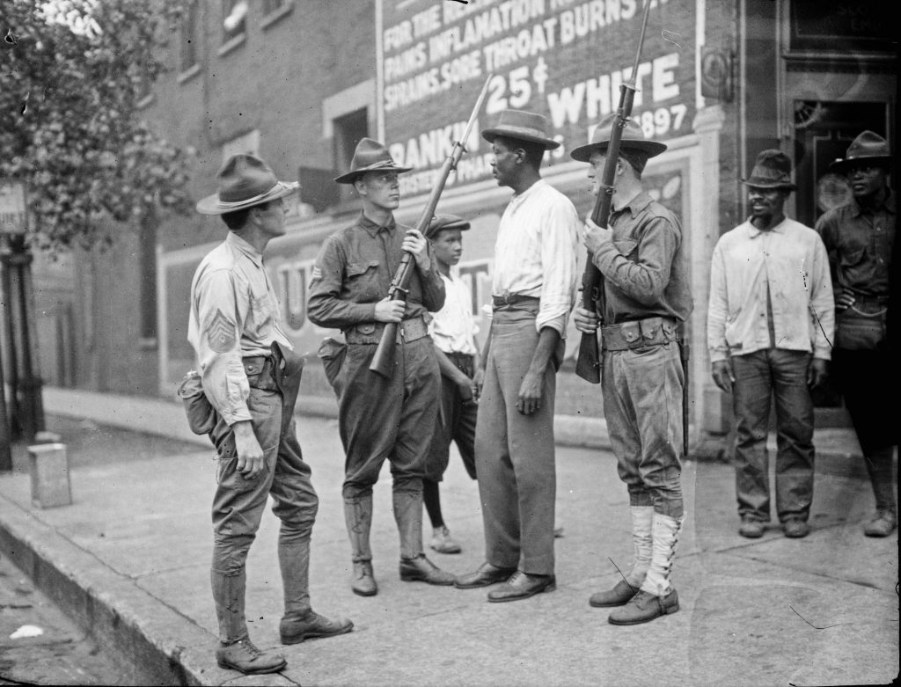
After WWI, the blacks who overflowed to Chicago for jobs at the start of the Great Migration, very soon they met the job limitations favoring returning white veterans. During the first half of 1919, the number of employed blacks fell from 65,000 to 50,000, igniting the future protest.
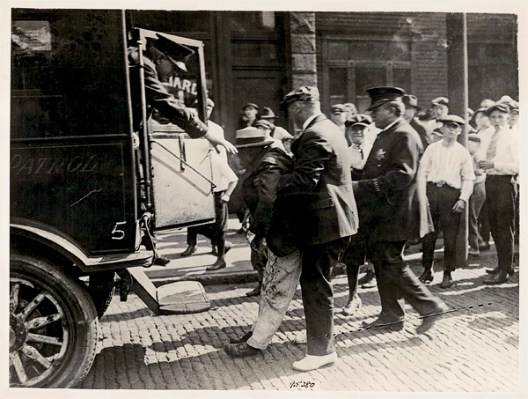
The grim pictures of the Chicago riots: police remove the dead body of the black man. It all started in July, at 29th Street beach. The murder led to a riot that lasted for seven days. On the second day, white men, women, and children waited outside the Union Stock Yard with switchblades and baseball bats to assault black workers and even disabled streetcars, so the occupants had no choice but to wade into the mob.
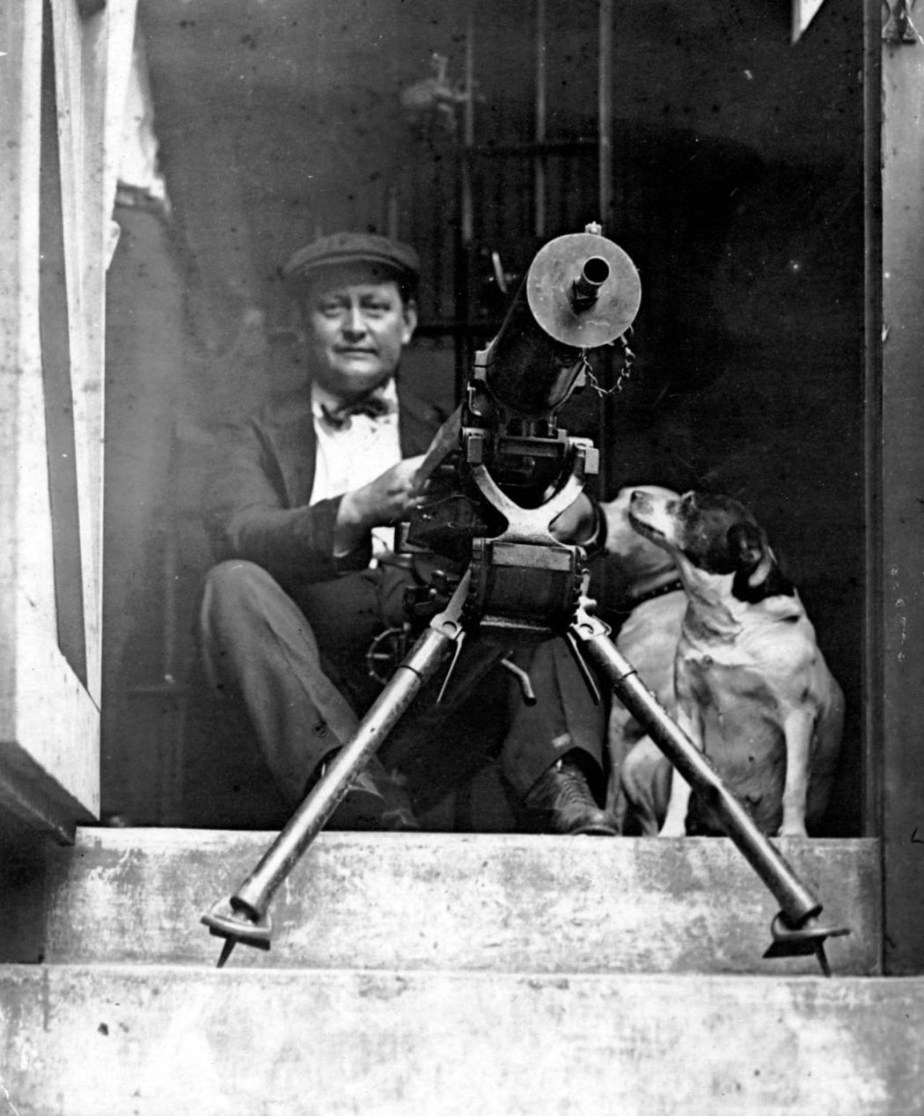
Rumors fed the chaos; aggression fueled the hostility. A pack of black men crowded the Angelus, one of the few all-white apartment buildings in the Black Belt, after a gossip that a white person had shot a black boy from a window. Police examined the house but didn’t spot any suspects. Unsatisfied with the investigation, someone in the crowd threw a brick at one of the cops. The police fired back, killing four.
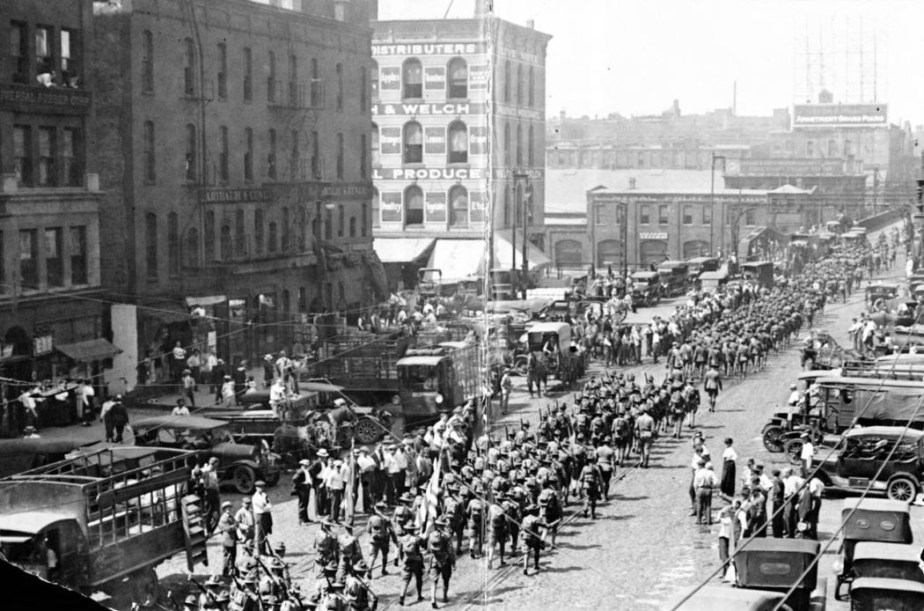
The riots reached its climax when Lithuanian homes near the stockyards were set on fire. White gang members in blackface committed the attack to fuel the loathing of blacks. The Lithuanians didn’t fall for it, though, and the riot ended—but not before 38 people were dead and 537 wounded.
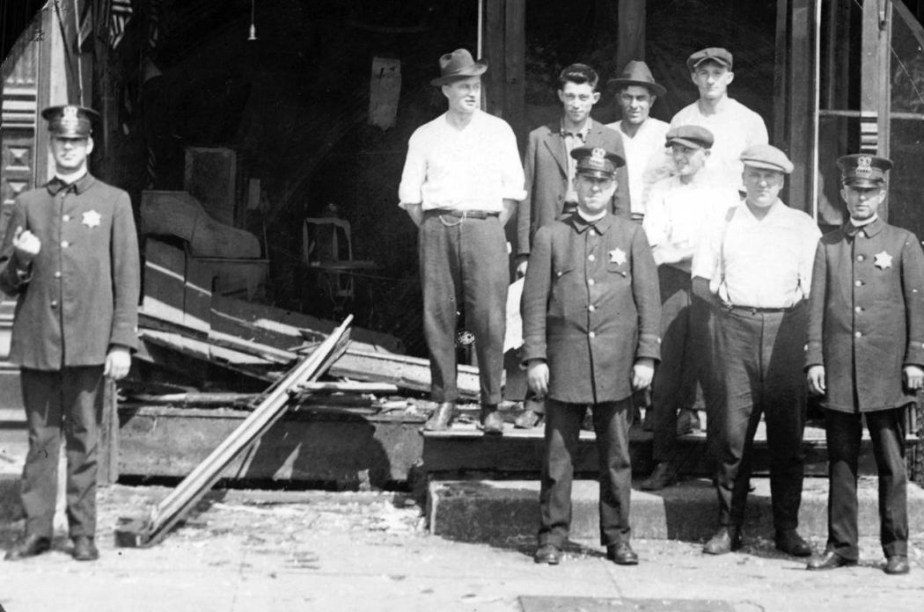
The Zvonirnir Club at 2903 Wentworth Avenue after the civil disorders.
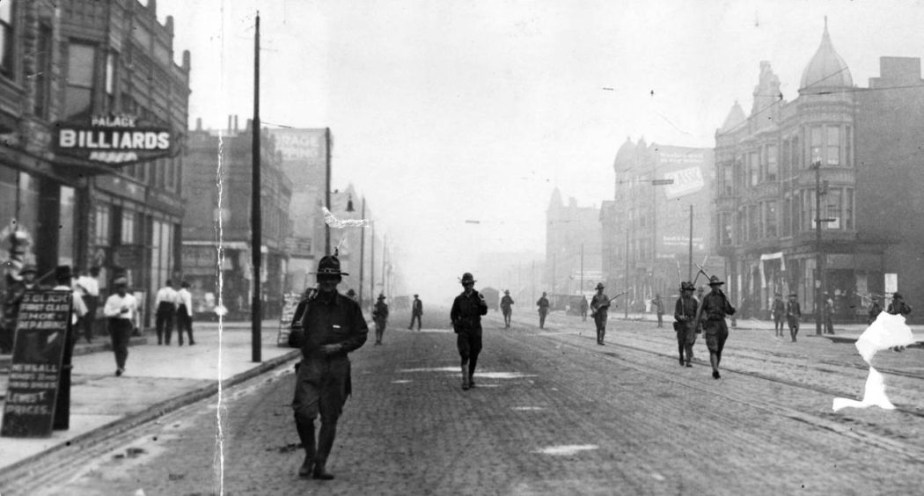
The state government-enforced local police with militia patrols. Photo dated Aug. 1, 1919
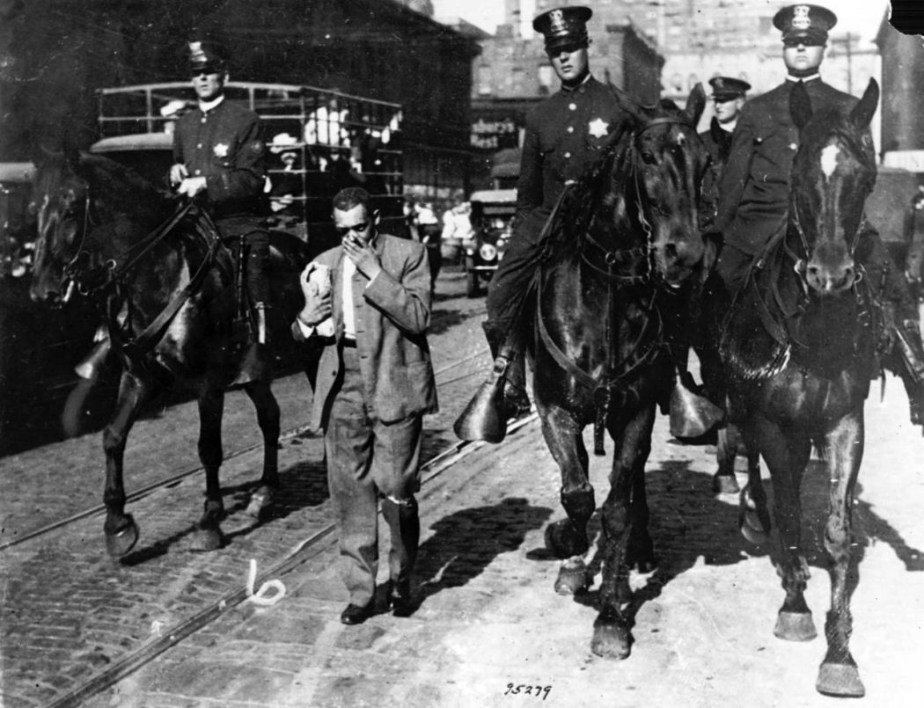
The mounted policemen escort African-Americans to a safety zone.
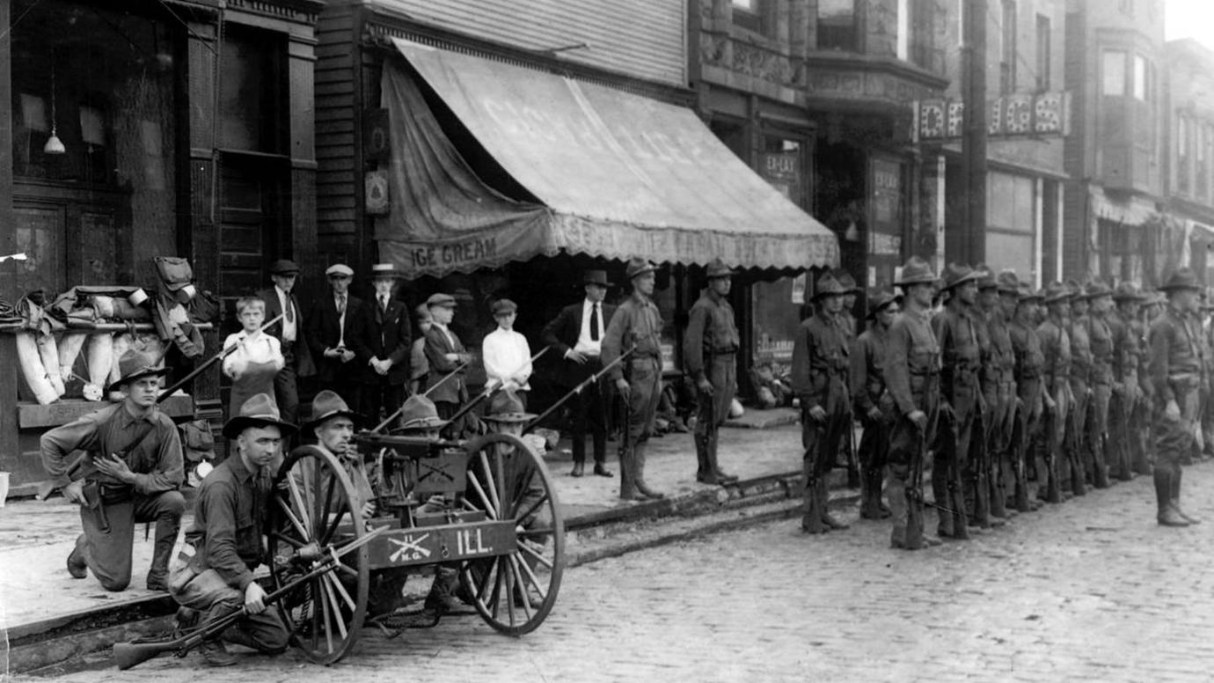
State militia troops gather at 47th Street and Wentworth Avenue during the riots.
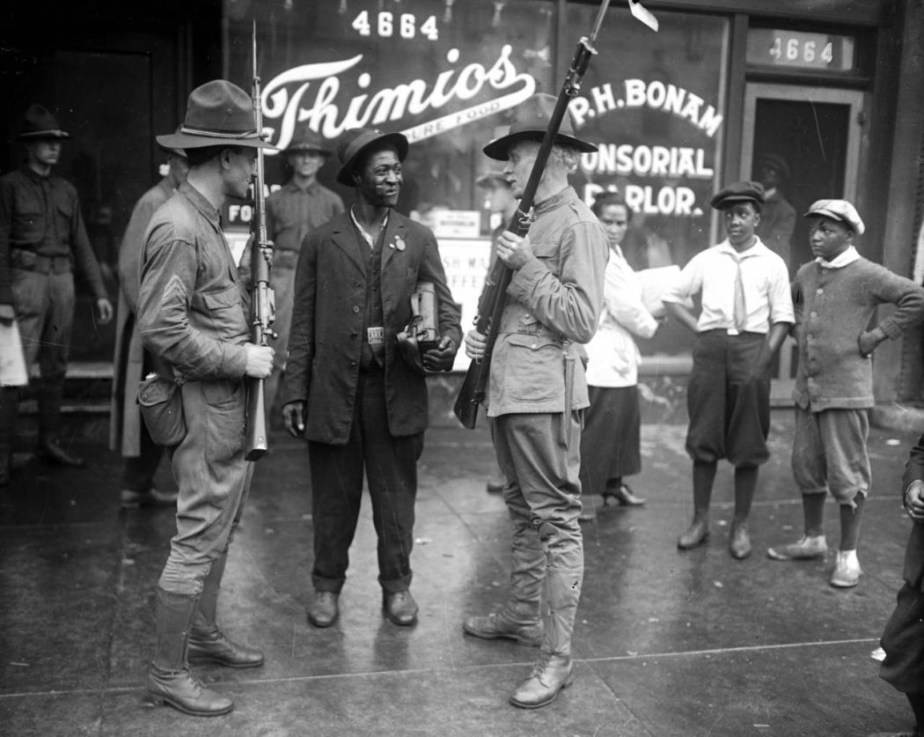
Soldiers from the state militia talk with a man during the Chicago race riots of 1919.
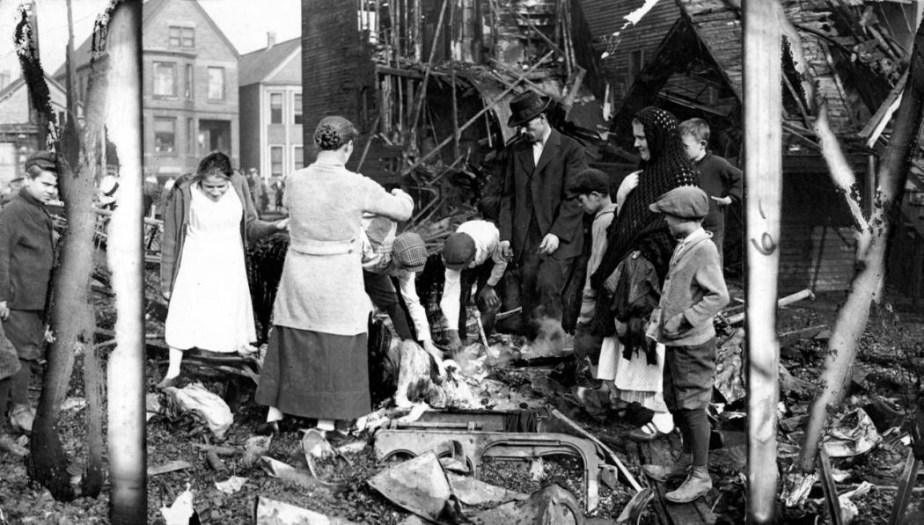
Locals look over the remains of a ruined house in the Stock Yards neighborhood.
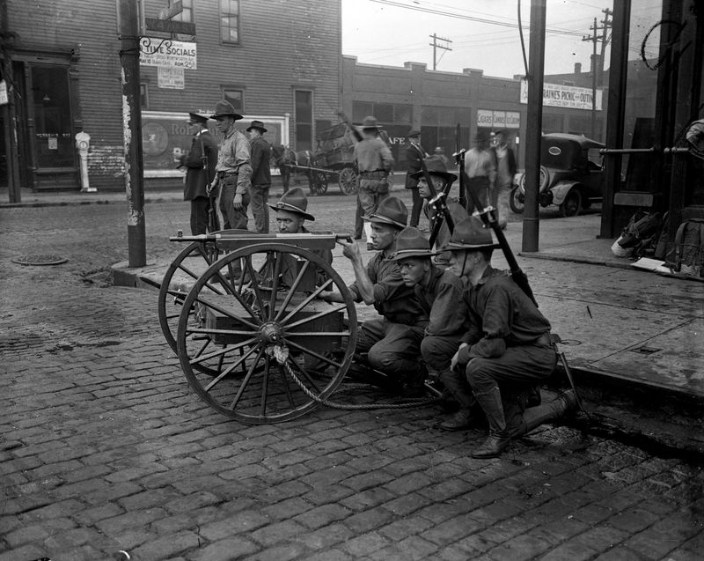
National Guardsmen, also referred to as the state militia, keep the peace at the corner of 47th Street and Wentworth Avenue during the 1919 race riots in Chicago.
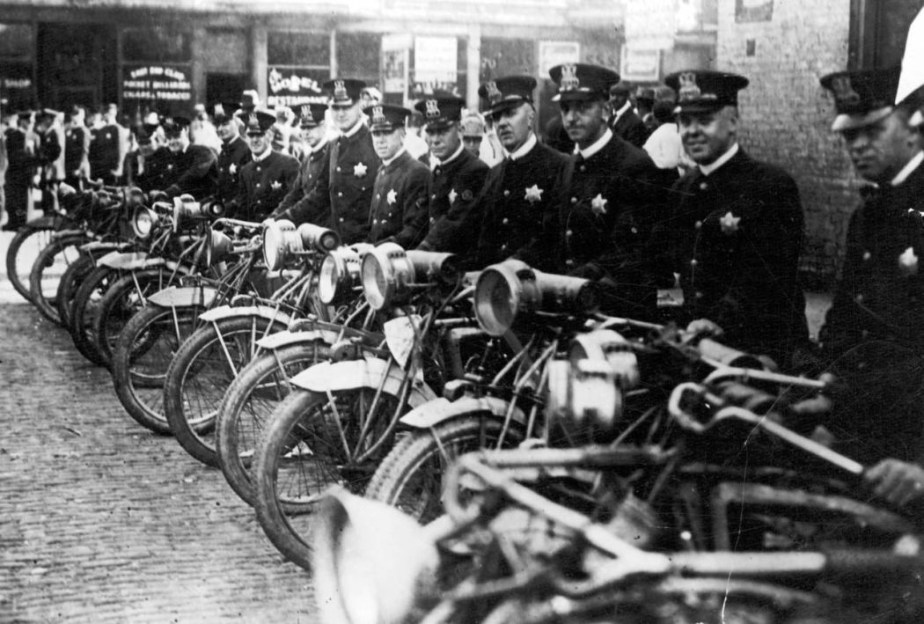
Heavily armed motorcycle and foot police officers stood at the ready for instant transportation to quell the rioting on Chicago’s south side on July 30, 1919
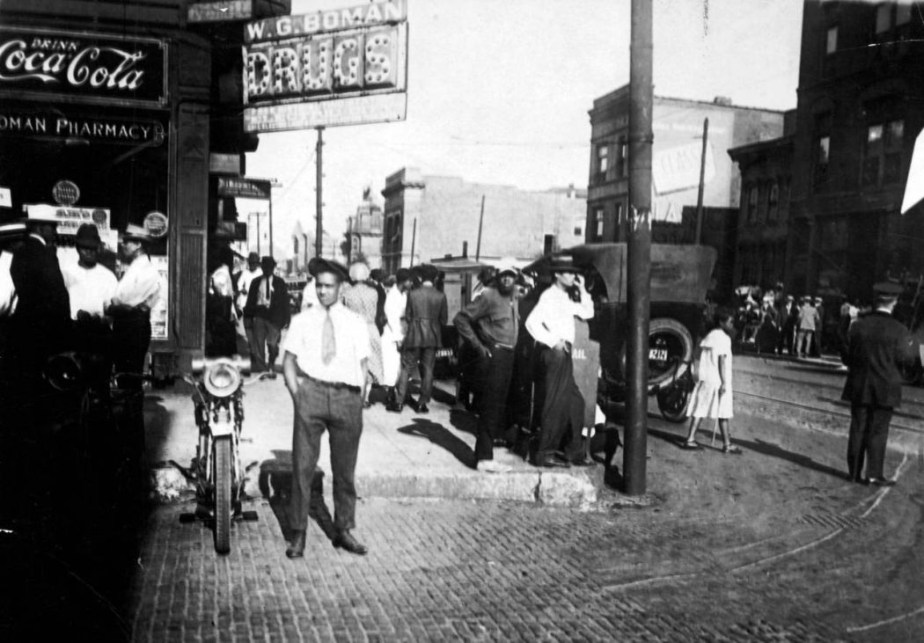
Crowds gather at 36th and State Streets, the center of the riot area, during the 1919 Chicago race riots.
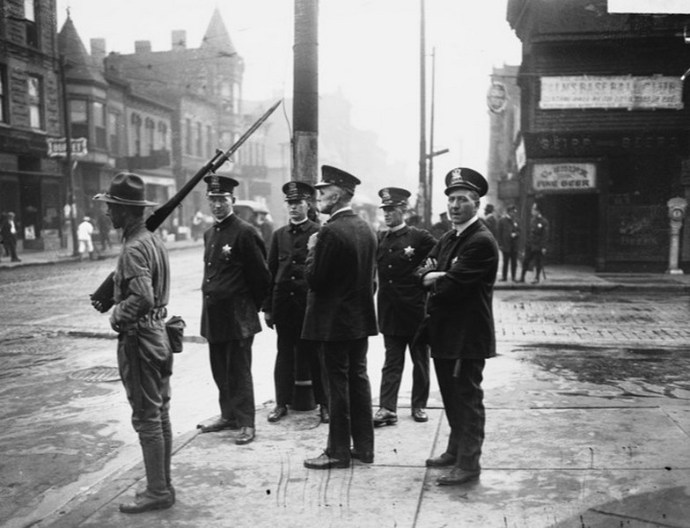
Chicago police officers and a soldier of the Illinois National Guard on a South Side street corner during the 1919 riots.
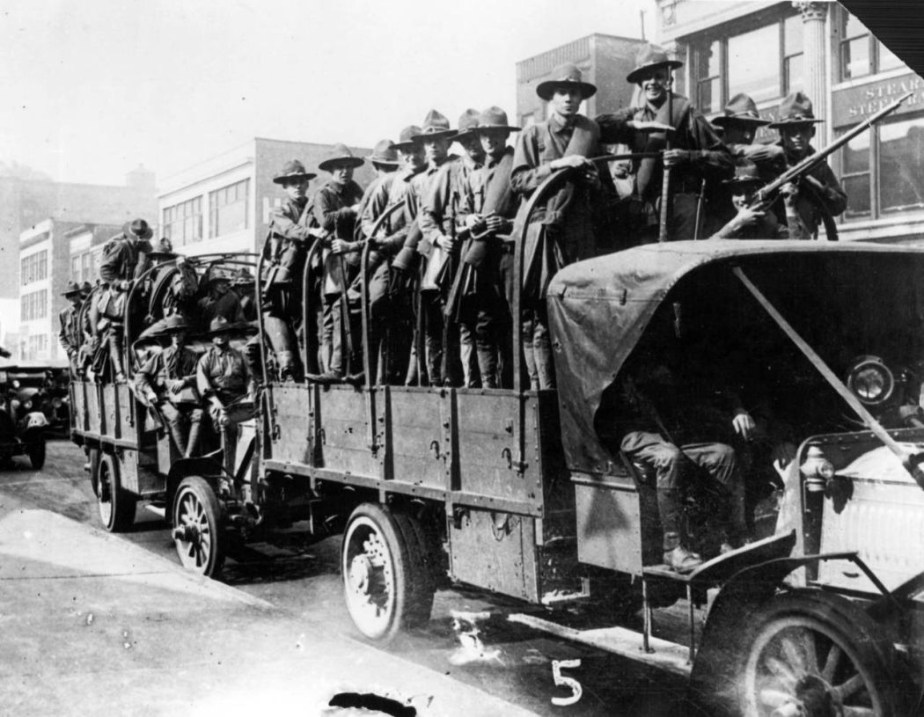
Army trucks loaded with troops are rushed to the Southside of Chicago to quell the race riot.
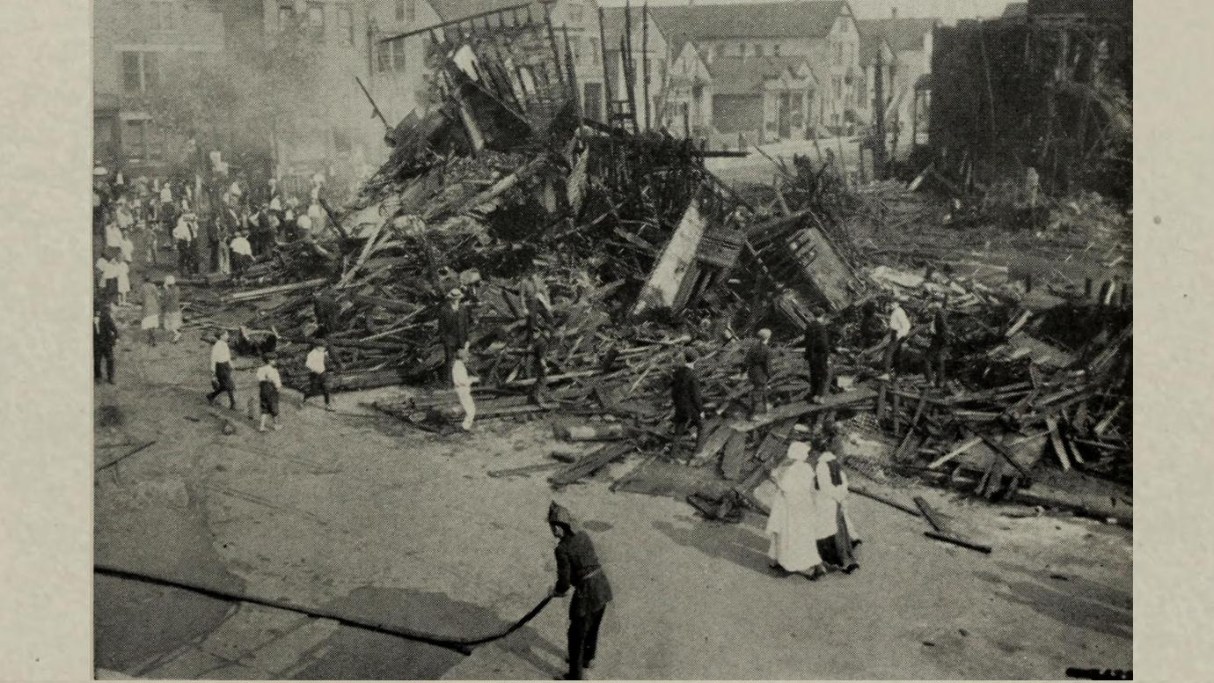
The aftermath of a fire in the Back of the Yards neighborhood.
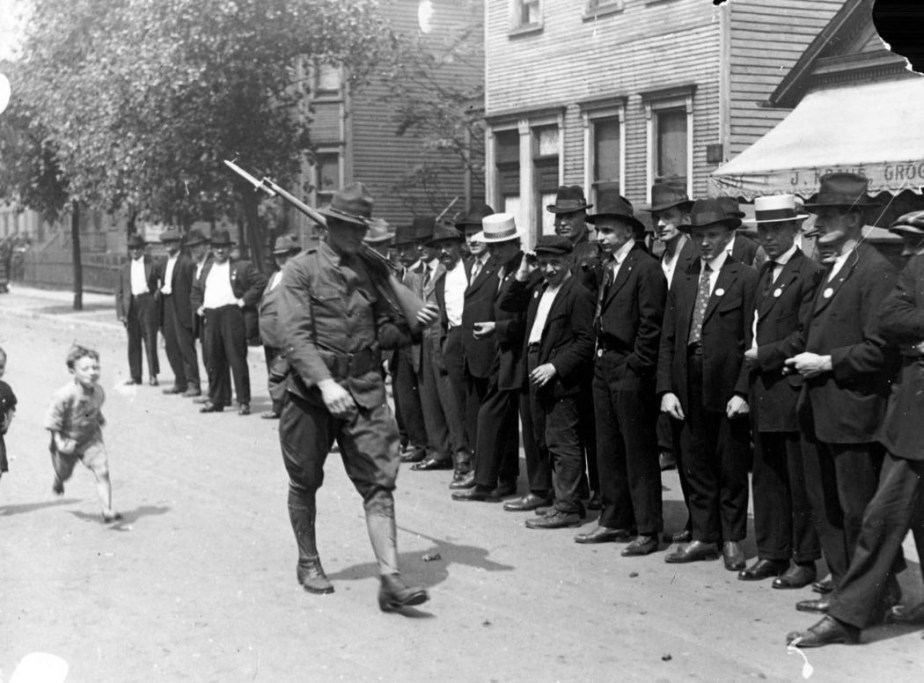
A soldier walks past a group of men during the Chicago race riots of 1919
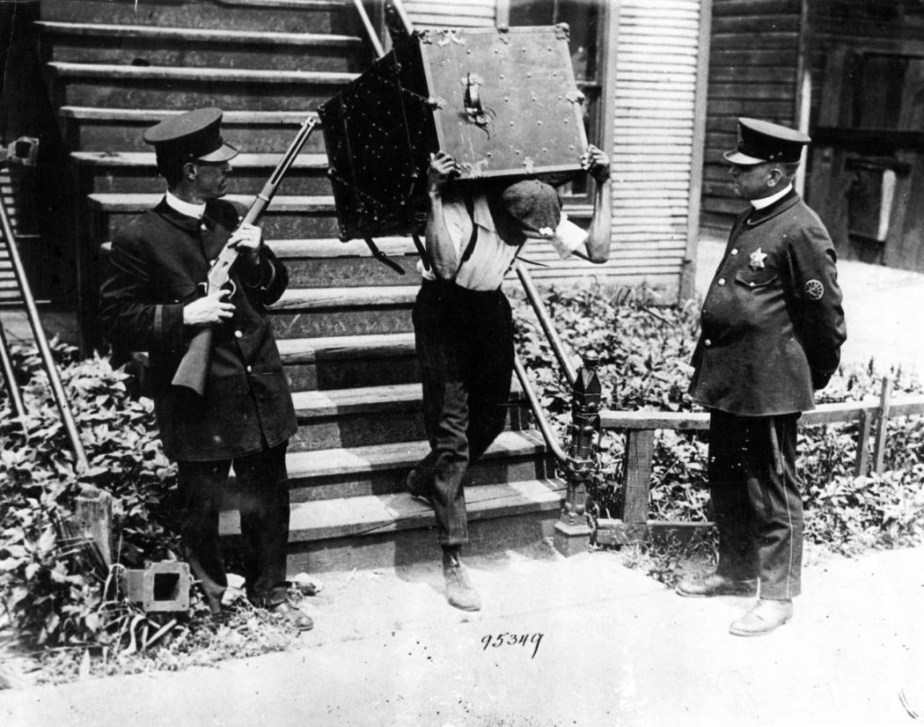
A black resident of the south side moves his belongings to a safety zone under police protection
Сообщение The Chicago race riots of 1919 in pictures появились сначала на Old Pictures.
]]>Сообщение A Pyramid of German Helmets in Front of Grand Central появились сначала на Old Pictures.
]]>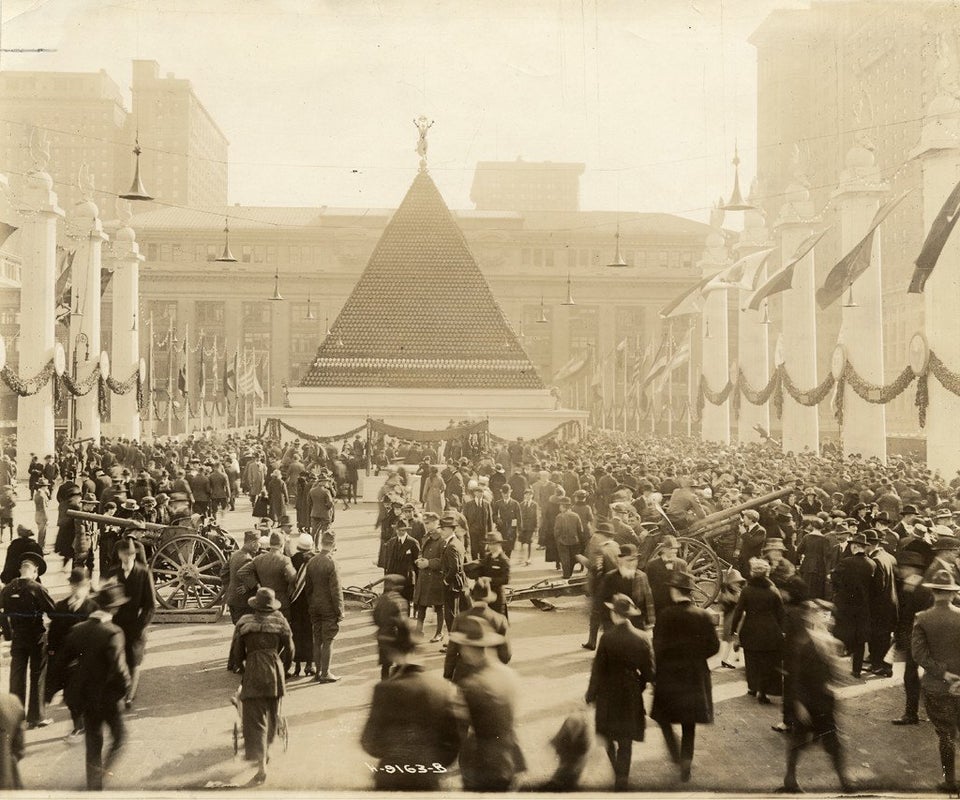
Pyramid of German helmets in front of the Grand Central Terminal, 1918
This pyramid at Grand Central was a pure propagandistic act promoting the 5th War Loan. The government widely raised funds for military purposes during the wartime, and these loans had different promotions (like WW1 posters), and creative ideas like this pyramid. So this bright image is another page in the history of the New York Central Terminal.
A pyramid consisted of 12,000 helmets neighboured other samples of captured German war equipment, like cannons. While many of the image’s details have been confirmed, the figure that was placed at the top of the pyramid is still subject to speculation. Some commenters believe that it’s Nike, the Goddess of Victory. There are also two cannons located on the left and right of the helmet pyramid.
Check our History of WW1 gas masks in photos.
Сообщение A Pyramid of German Helmets in Front of Grand Central появились сначала на Old Pictures.
]]>Сообщение History of WW1 gas masks in photos появились сначала на Old Pictures.
]]>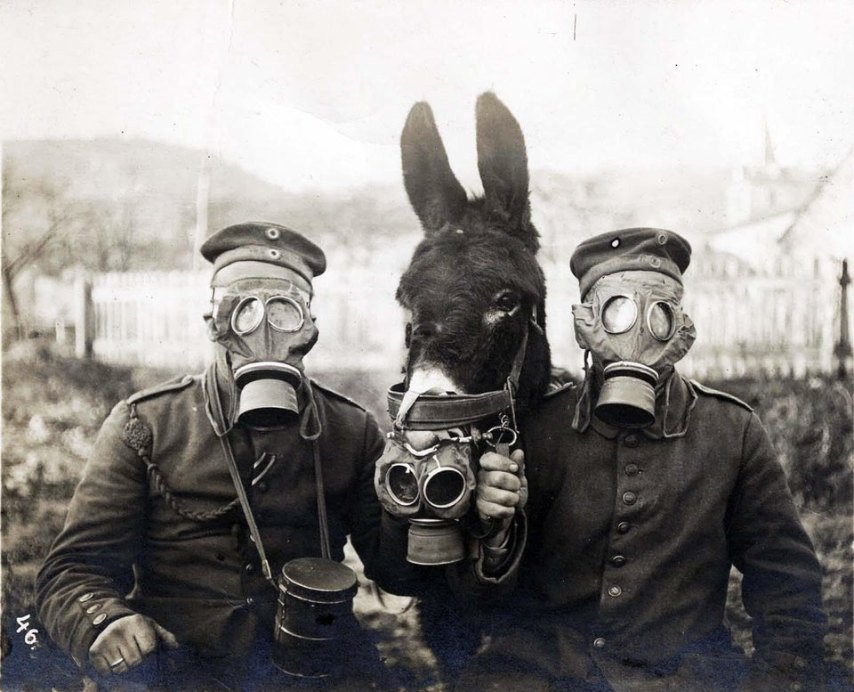
History of gas mask in photos: German soldiers and their mule
War history didn’t know gas attacks before WW1, and these photos will show you how combatants, civils, and sometimes animals, protected themselves with gas masks against this new mortal threat.
The historical appearance of gas attacks
Germans were the first to realize the efficiency of the gas attacks, but other countries followed them very soon. The very first german forces used chemical shells on April 22 versus the french division. Russian forces faced the green gas threat on May 31, 1915. A greenish cloud that appeared above the trenches at about 3:30 a.m. was mistaken for a well-known smoke screen, usually followed by an attack. Therefore, reserves tightened around the front line, and the forward line as crowded as possible.
Two Russian regiments were virtually destroyed as a result. Losses included 16 officers and 3147 soldiers. Total casualties on the entire front sector hit eight thousand.
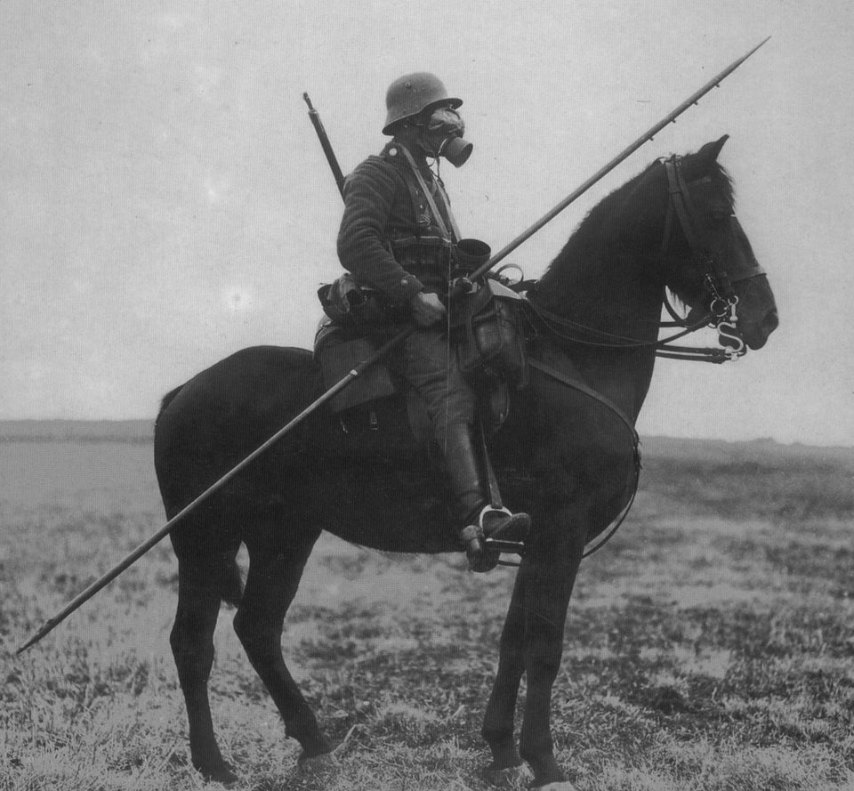
WWI German horse rider equipped with a spear and a gas mask
All allied countries started their researches towards any protection from gas attacks. Russian scientists played an exceptional role in the history of chemical warfare, and in particular, in the history of the development of gas masks.
Both in the pre-war period and during the war of 1914-1918, there were many outstanding world-famous scientists among the Russian professors. Most of them were involved in defense researches.
Check other war history photos: Crimean War.
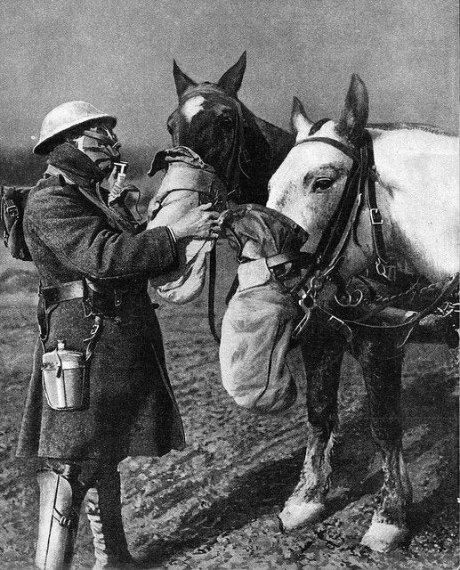
History of gas masks in photos: horses needed protection too
The best mean of protection involved activated charcoal, which performed as a natural filter for gas masks. The crush-testing was pretty simple: sulfur was burned in an empty room, and when the concentration of sulfur dioxide reached a level at which it was impossible to enter the room without a gas mask, people came into it with worn gauze bandages, between the layers of which fine-grained activated charcoal was wrapped. Charcoal showed the best result when used with a tight fit of a gas mask.
Nonetheless, the history of the gas mask is not that simple. Russians somewhat improved gas masks and adjusted them to the gas attacks protection then invented them. Let’s note that the modern gas mask was designed in 1912 by the American Garret Morgan. True, it was intended to protect firefighters and engineers during toxic environments works. Lewis Haslet claimed the first American patent for a “lung protection device” in 1849. The German Alexander Drager patented his gas mask design in America in 1914. All of these history devices are here, in this gas masks photos collection.
Check other war history photos: Korean War.
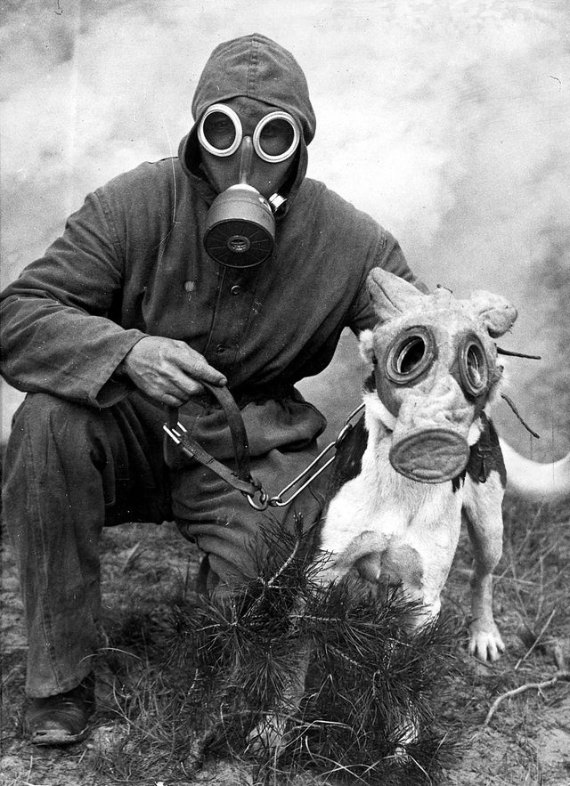
History of gas mask in photos: German soldier and his dog
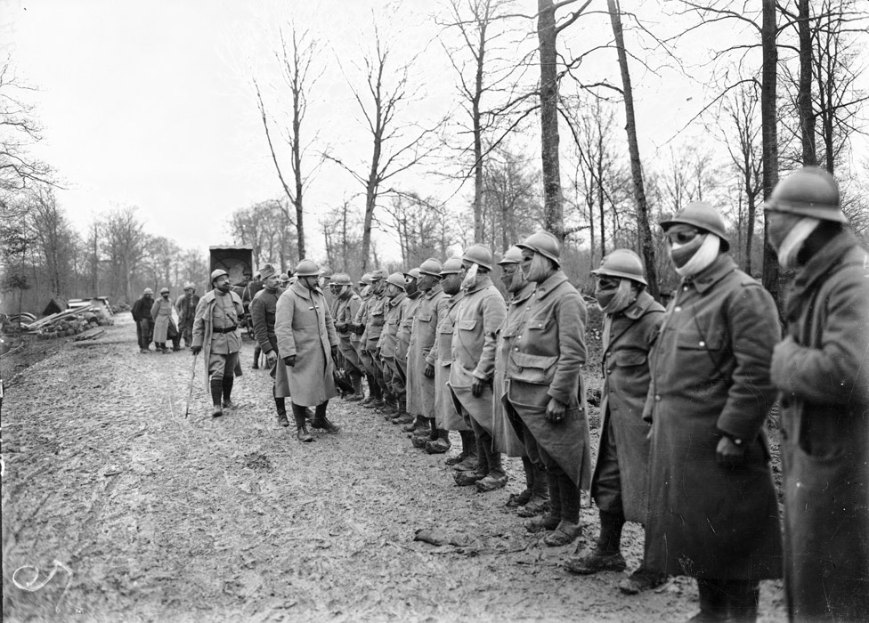
History photos of Verdun rumble preparations
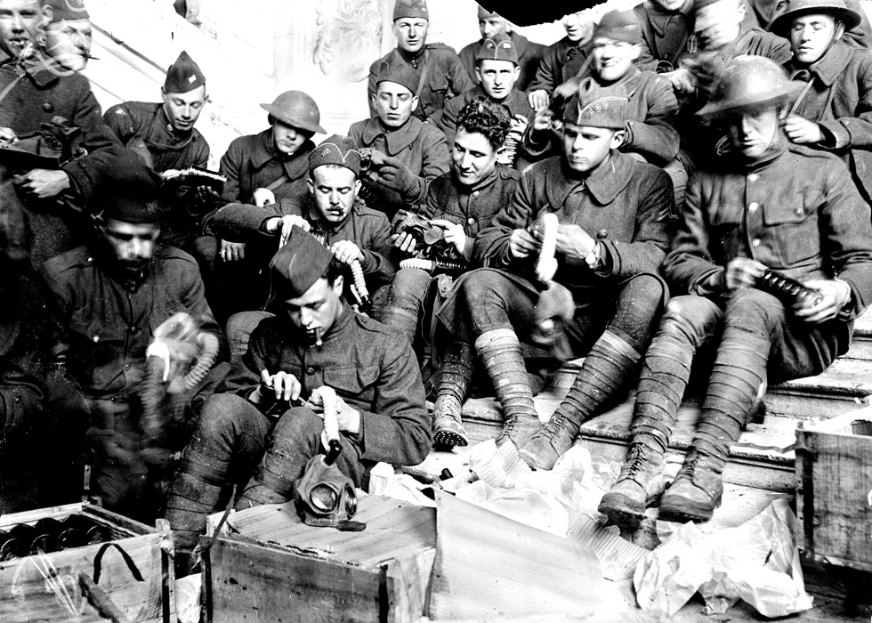
US soldiers are checking their gas masks, WW1.
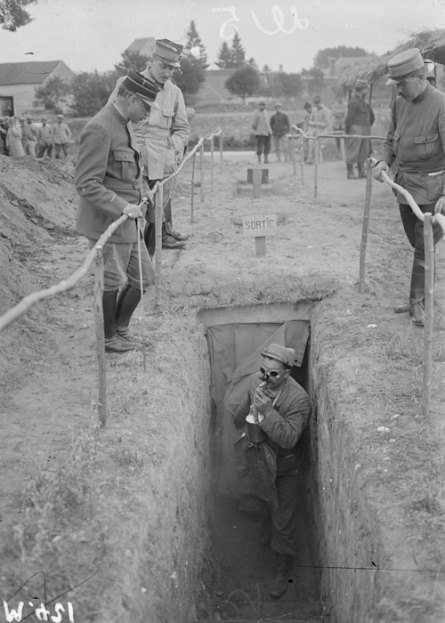
History photos of Somme battle preparations
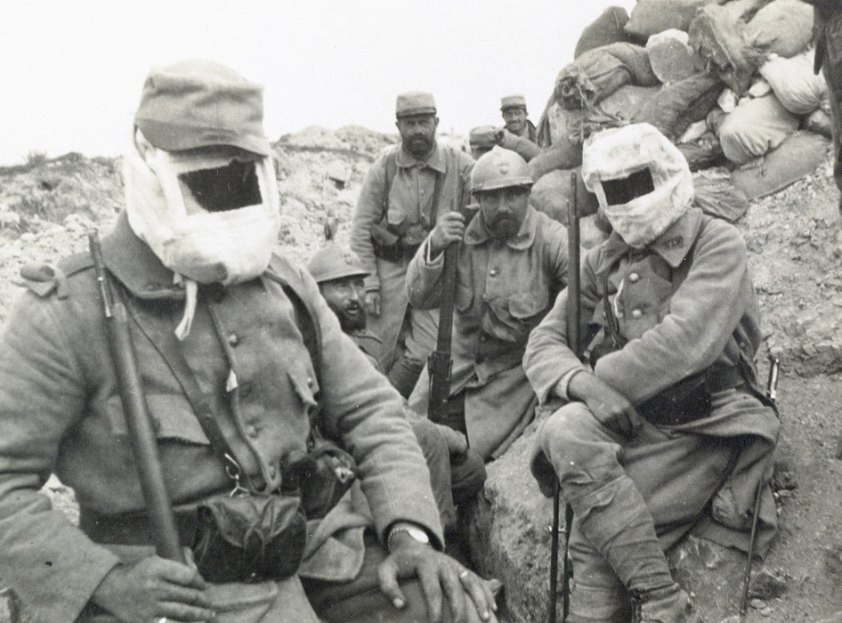
Soldiers of 279th brigade, 1915
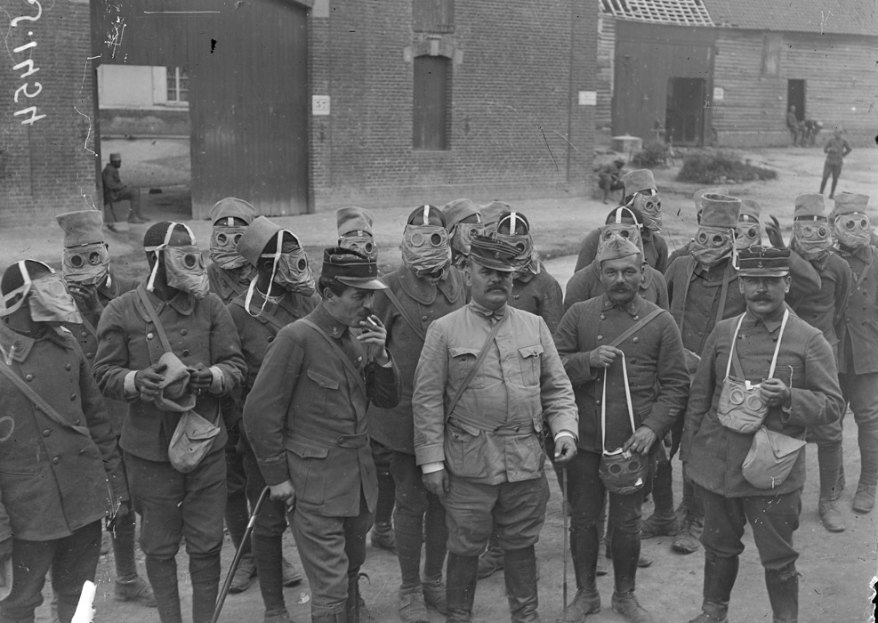
Soldiers from Senegal are training to wear gas masks.
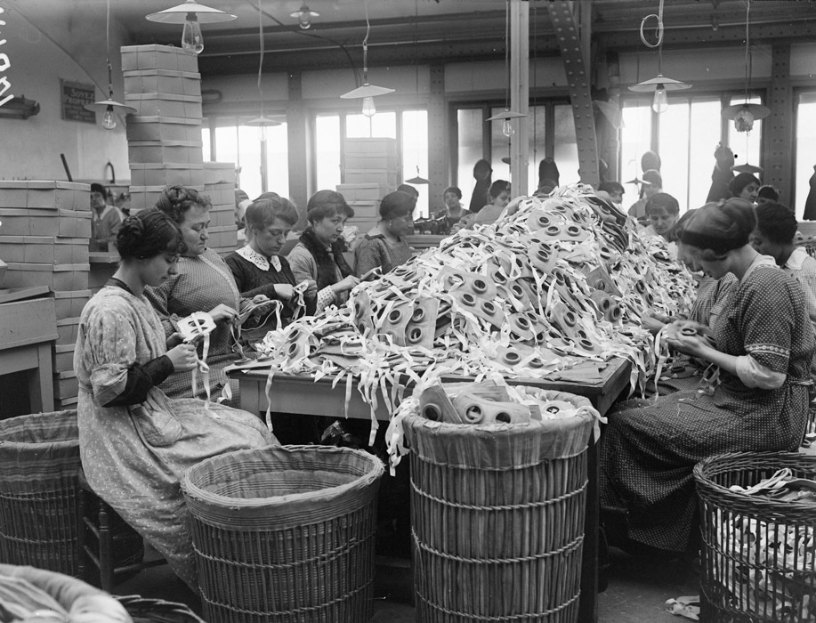
History photos of Pate-De-Vensen factory workers producing masks
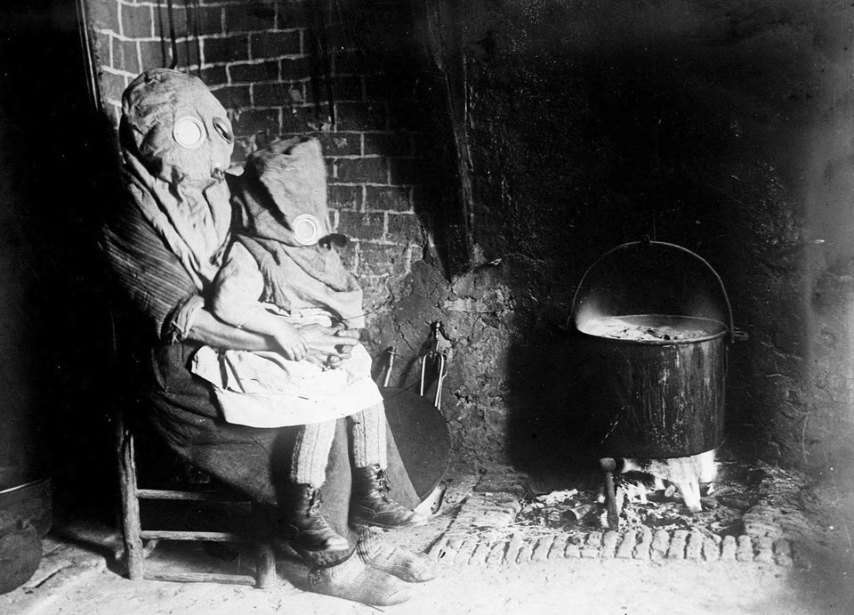
Mother and child wearing gas masks, somewhere in the French countryside along the Western front, 1918
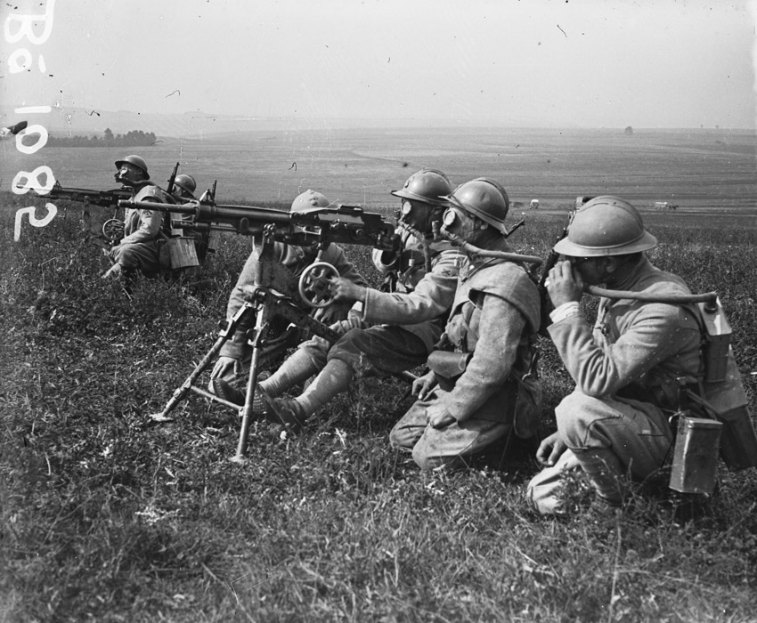
Machine gunners wearing gas protection, 1916
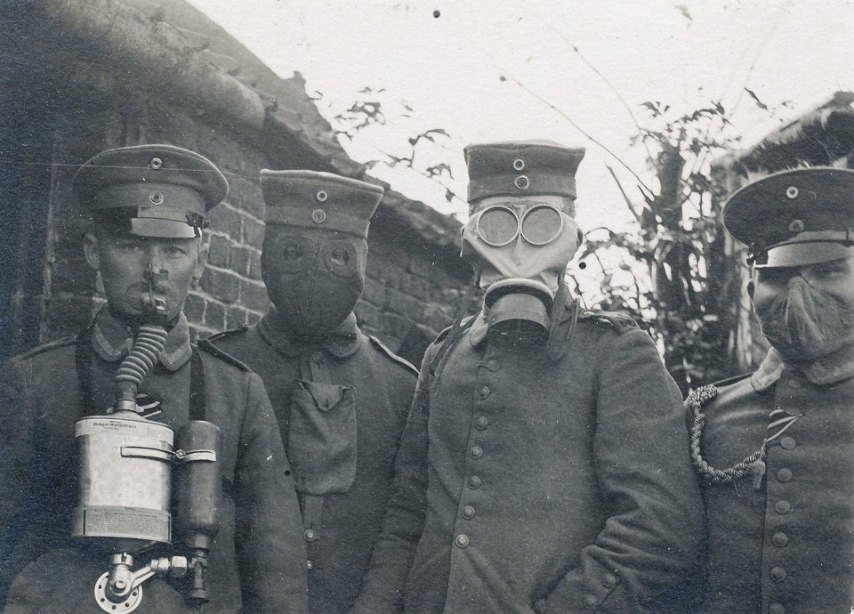
German soldiers were wearing four different types of gas masks that were used in the early years of World War 1, c. 1916
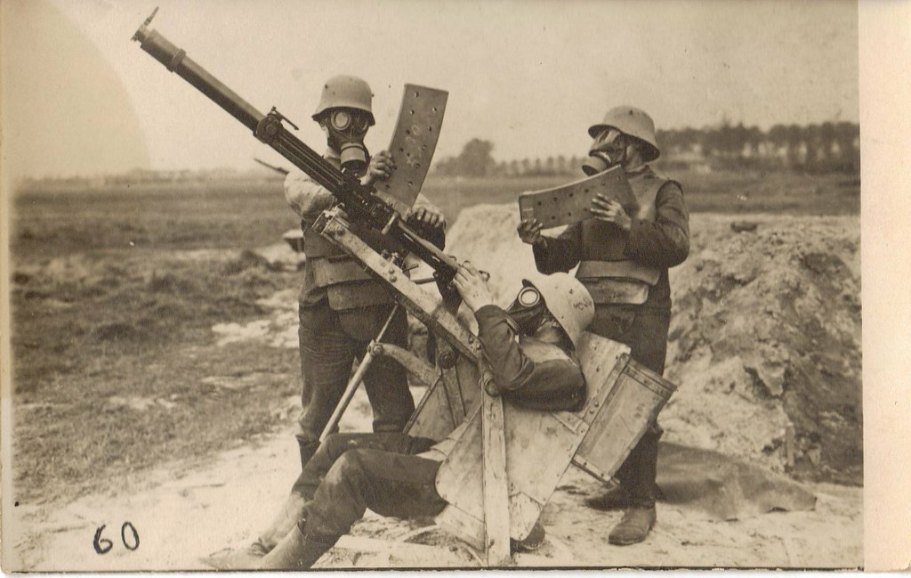
German machine gun crew wearing Grabenpanzer and gas masks man a Becker-Flugzeugkanone repurposed as an anti-aircraft gun, 1916
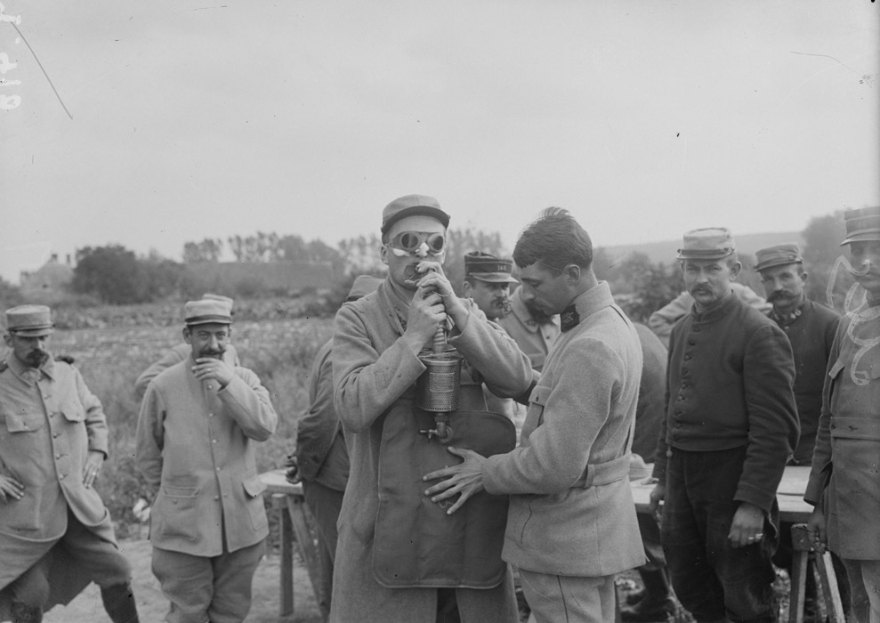
History photos of Gas mask training before the battle of Somme
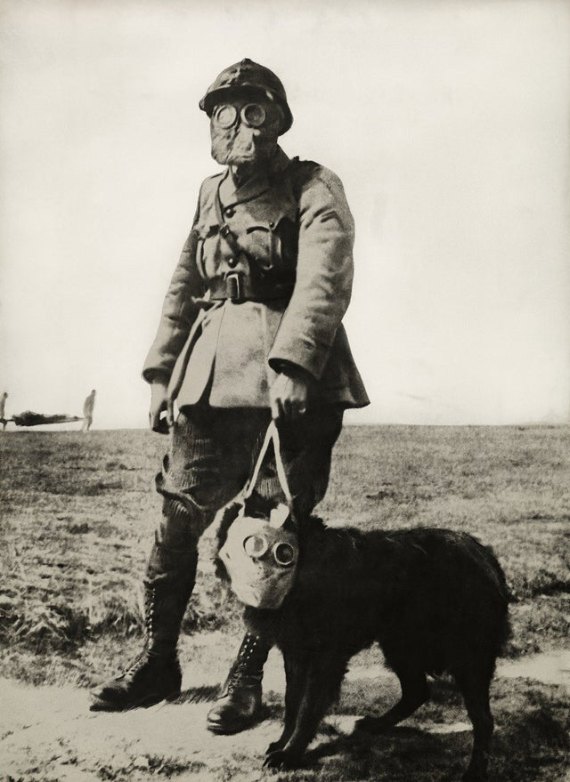
French soldier with a dog in a gas mask
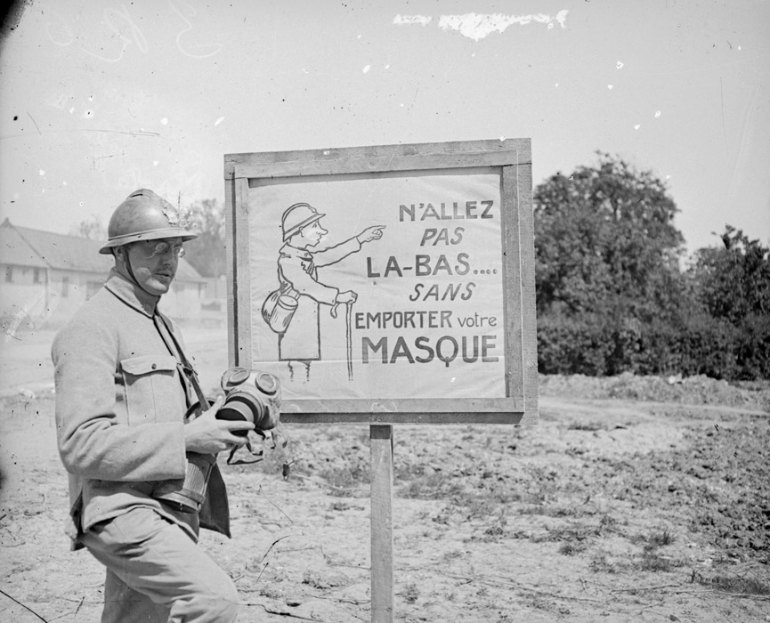
History picture of the anti-gas sign: Wear the mask!
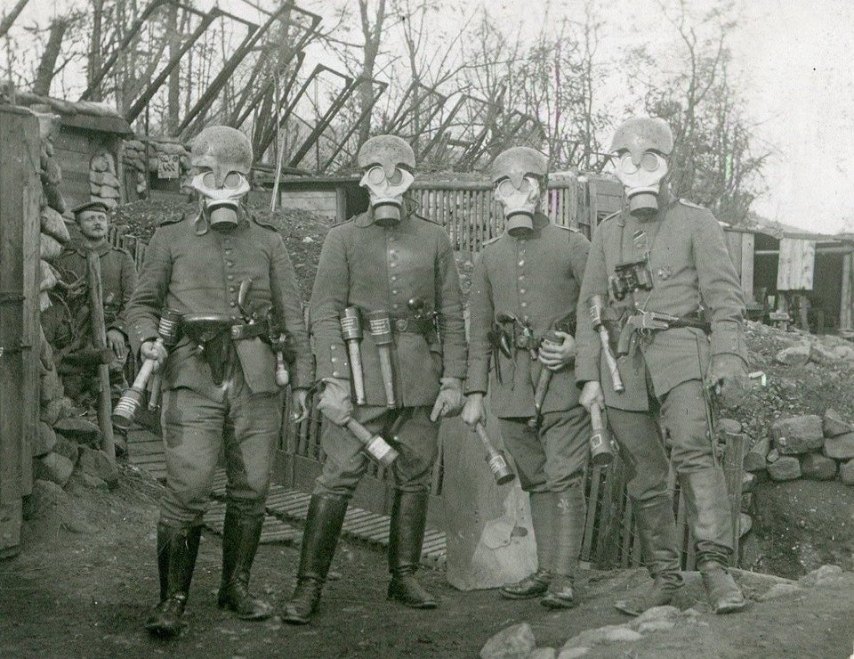
Four heavily armed German soldiers wearing gas masks and an early type of steel helmet called the Gaede which was introduced on the Vosges Front in late 1915
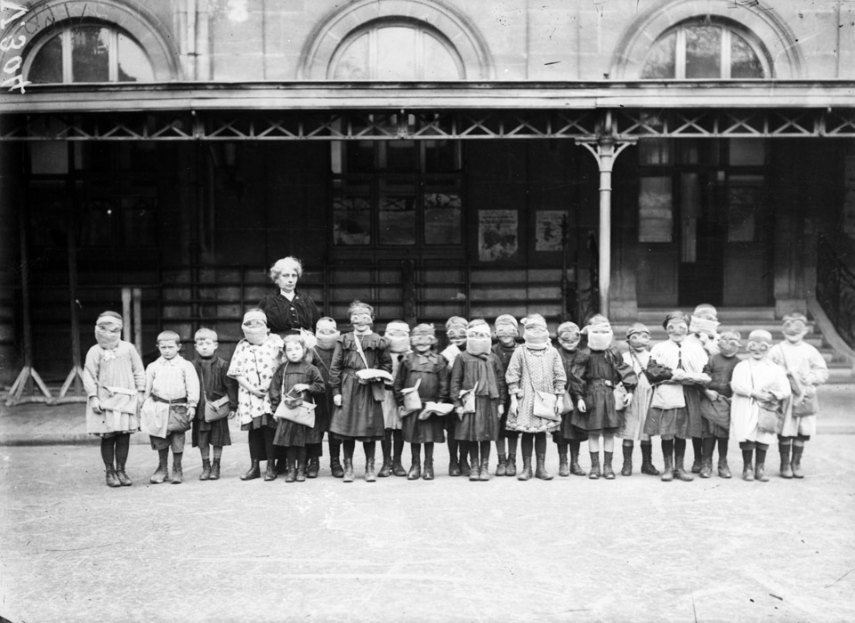
History photos of children of Reims in gas masks, 1916
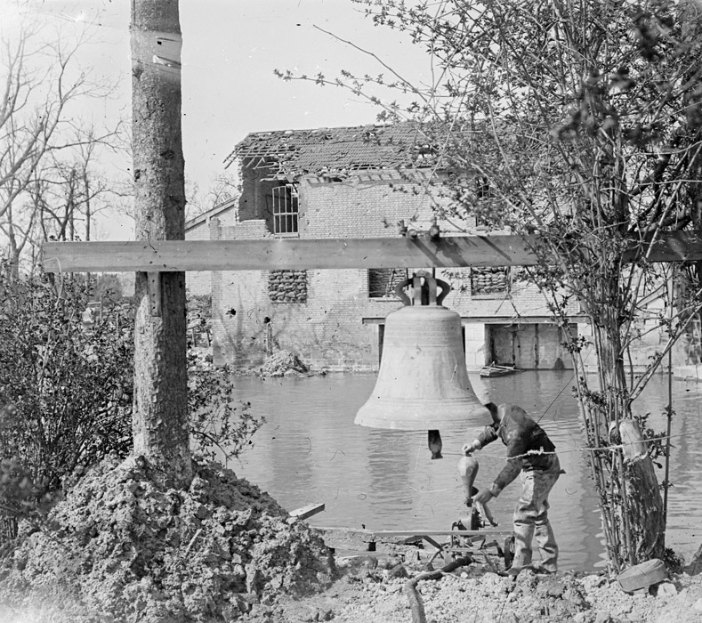
History photos of the bell in Marna that alarmed about gas attacks, 1917
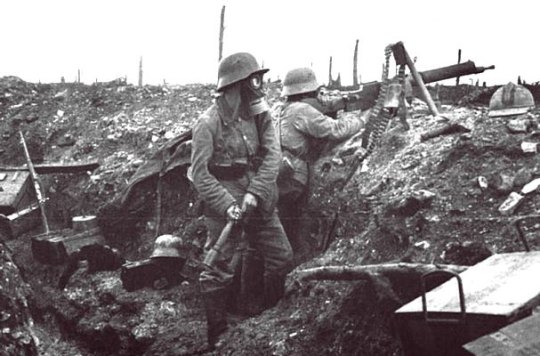
History photos of the Verdun battle: German soldier in a gas mask
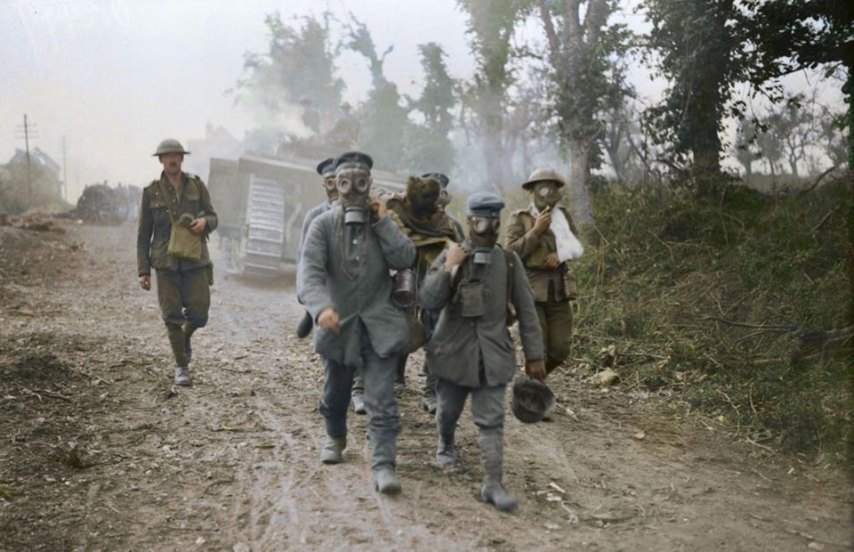
Battle of Amiens. Tanks are advancing. Prisoners bring in wounded wearing gas masks. August 1918
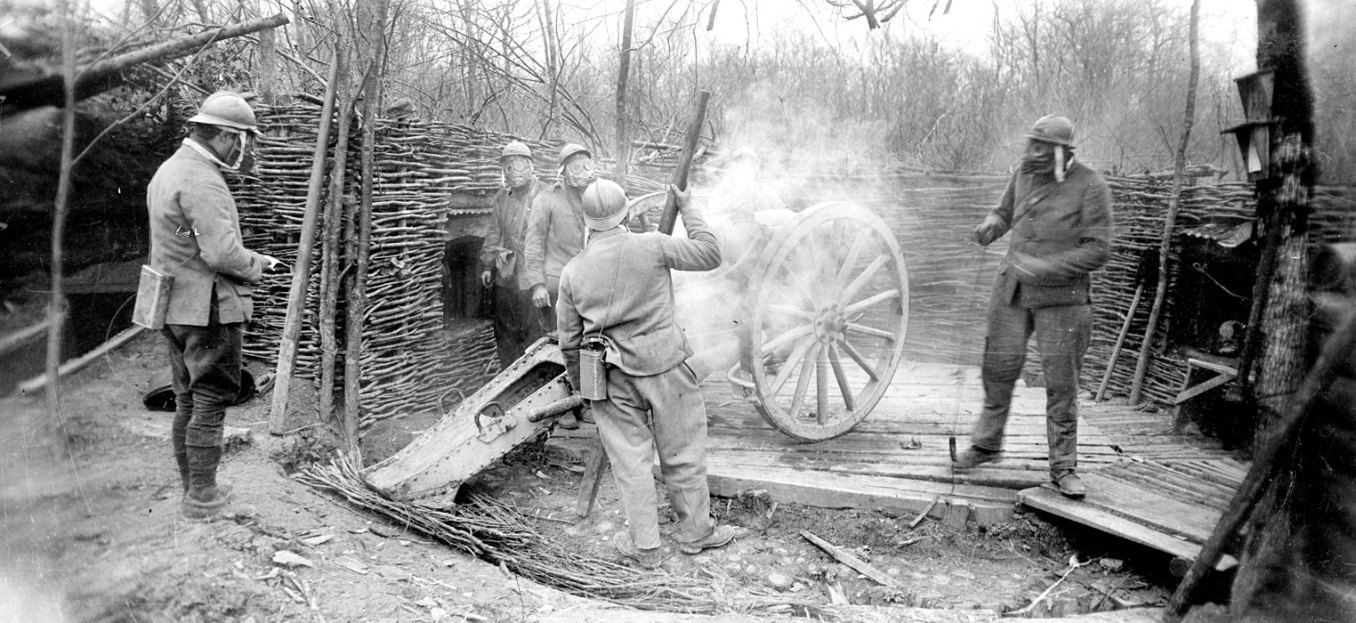
Shooting the chemical shells, 1916
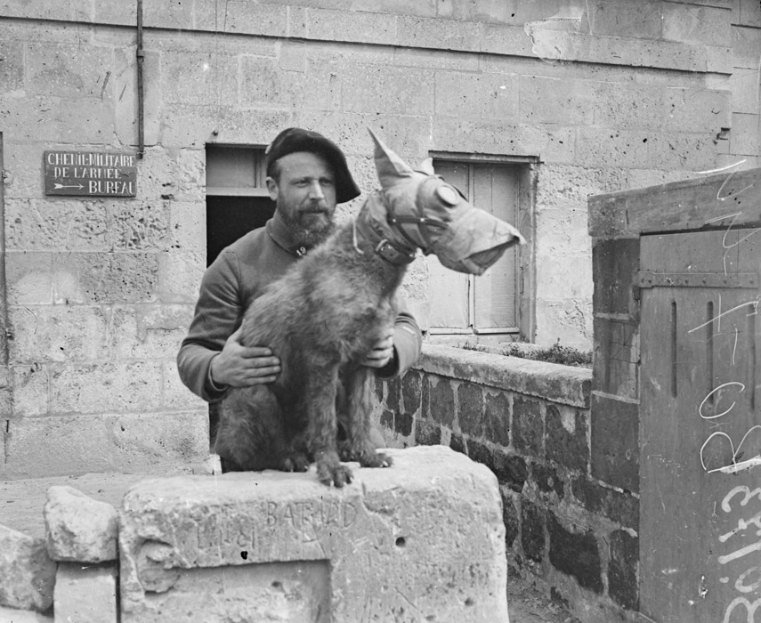
Dog wearing a gas mask, 1917

An armed German soldier wearing a gas mask posing with a sign celebrating Easter and an Easter egg snowball in a trench on the Eastern Front, 1917
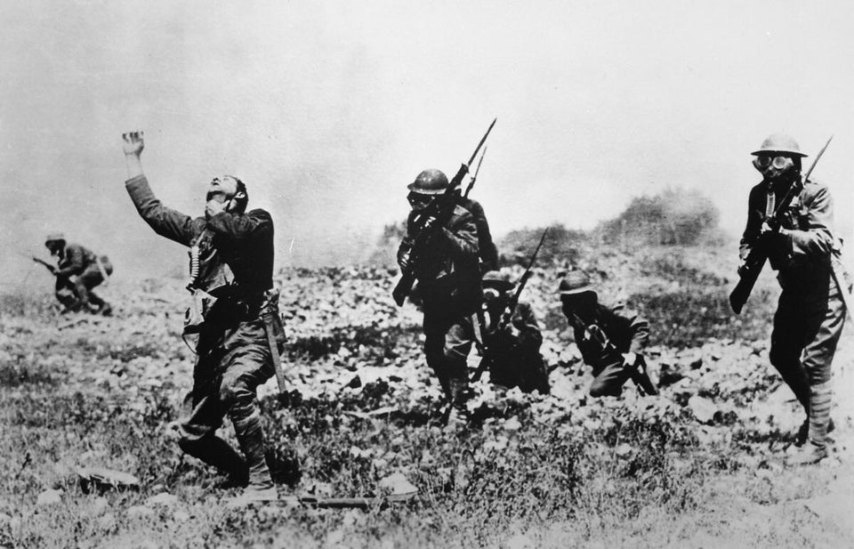
An American soldier chokes on phosgene gas after failing to put on his gas mask in time.
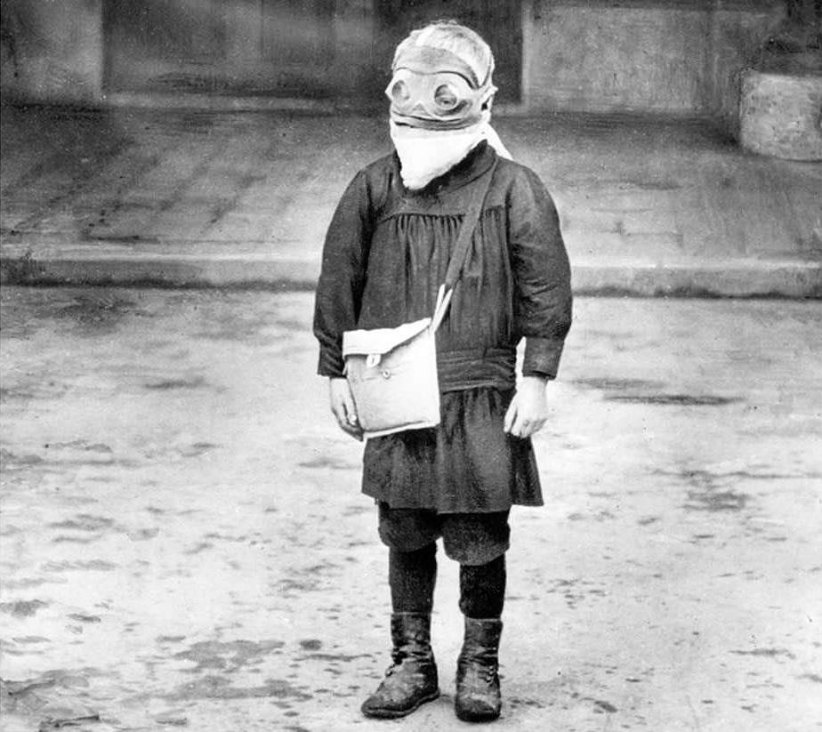
A young schoolboy of Reims wearing his gas mask, France, January 1916
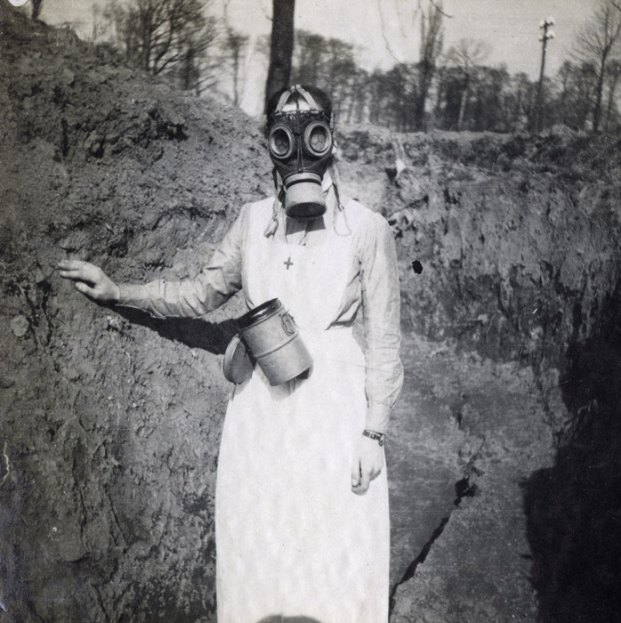
History photo of a nurse wearing a gas mask, 1918
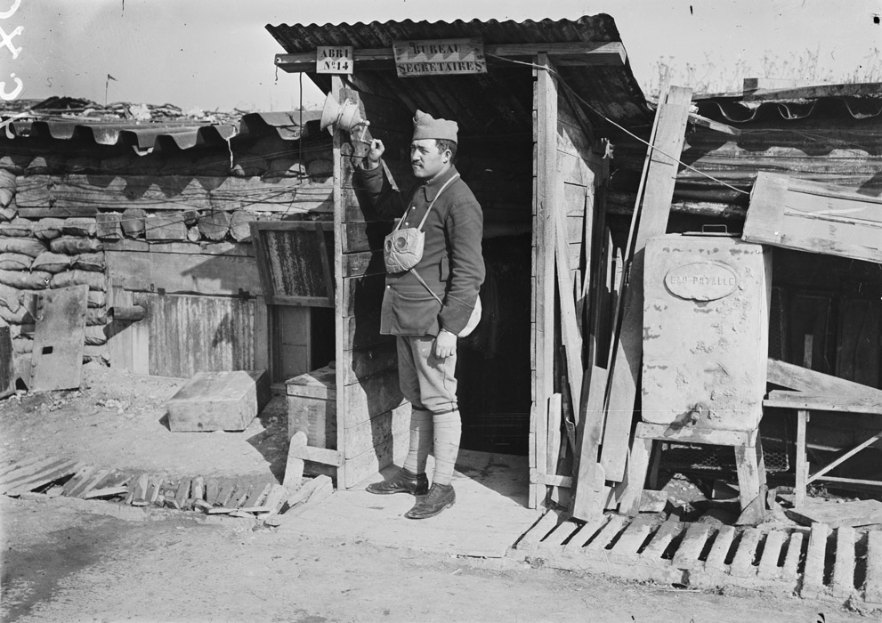
Alarm signaling a gas attack, 1916
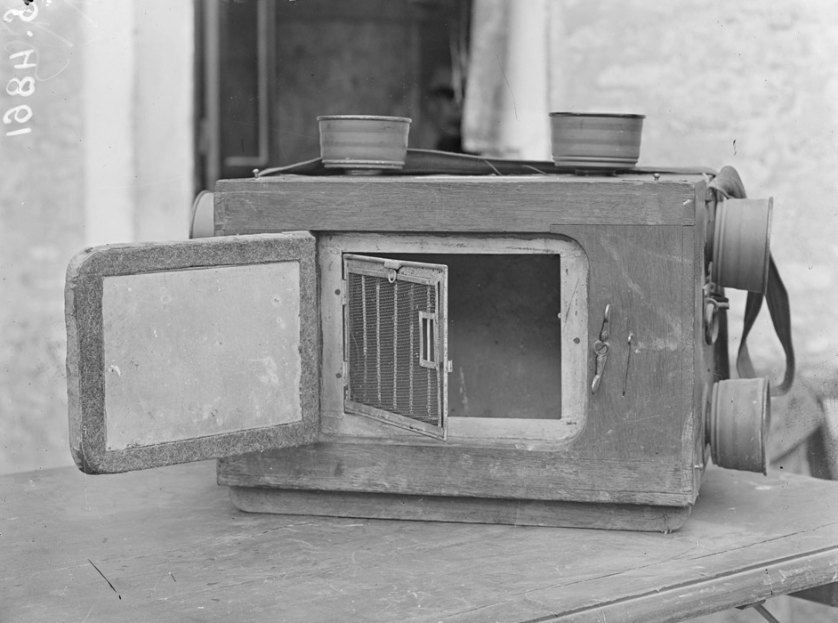
These cages saved post pigeons’ lives during the gas attacks.
Сообщение History of WW1 gas masks in photos появились сначала на Old Pictures.
]]>Сообщение US WWI propaganda posters появились сначала на Old Pictures.
]]>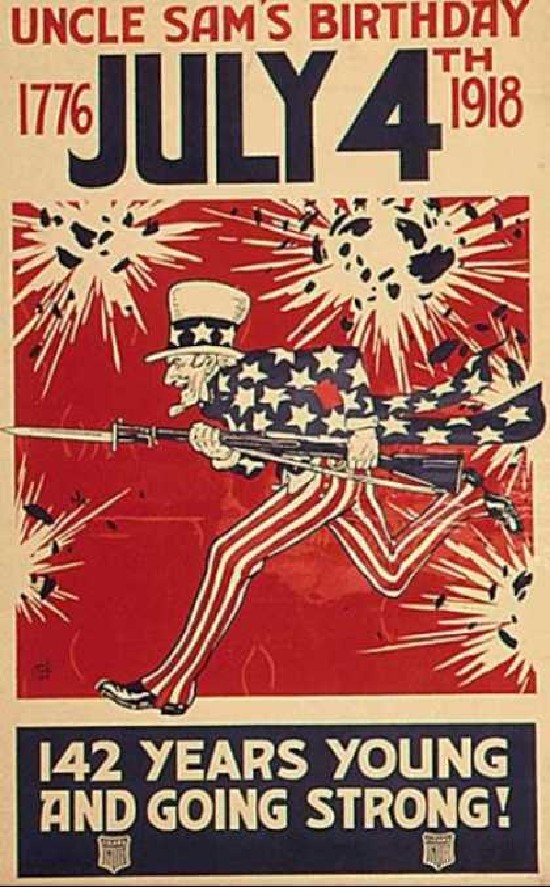
The US entered war I in 1917 in alliance with the good Britain and France. By this time the US economy was one the largest in the world, but nevertheless the government needed to raise funds to support the military activity in Europe in all possible ways, including selling bonds to the citizens of the US. Here’s how the art of the propaganda came in help. The United States was already a leader and trendsetter in the recently discovered art of movie making and therefore the new profession of economic advertising. So it was just a matter of time when such effective newly discovered technologies will become an instrument in the shaping of the American people’s minds and therefore the altering of popular opinion into a pro-war position. The idea of participating in the war ‘over there’ had to be planted into citizen’s minds and result into recruitment to the army itself or funding the war activities with their dollars.
The visual part of this propaganda consisted mainly of posters. The simple attention grabbing slogan and the self speaking illustration served well, convincing people to support the army. They might be pasted on the edges of buildings, put within the windows of homes, tacked up in workplaces, and resized to seem above car windows and in magazines.
In 1917 the U.S. government’s public information committee formed a Division of Pictorial Publicity, and their main goal was to use the advertising techniques in messaging the war news. The committee, headed by former investigative journalist George Creel, emphasised the message that America’s involvement within the war was entirely necessary in achieving the salvation of Europe from the German and enemy forces.
In his book titled “How we Advertised America,” Creel admitted that the committee was called into existence to form WWI a fight that might be a “verdict for mankind”. He called the committee a voice that was created to plead the justice of America’s cause before the jury of popular opinion . Creel also refers to the committee as a “vast enterprise in salesmanship” and “the world’s greatest adventure in advertising”. Needless to say that the committee’s message resonated deep within every American community and also served as a corporation liable for carrying the complete message of yank ideals to each corner of the civilized globe. The isolationism that was once popular across the US public opinion was replaced with understanding of the importance of the events that took place in Europe and necessity of the US government to participate in them.
142 years young and still strong Uncle Sam is going to war
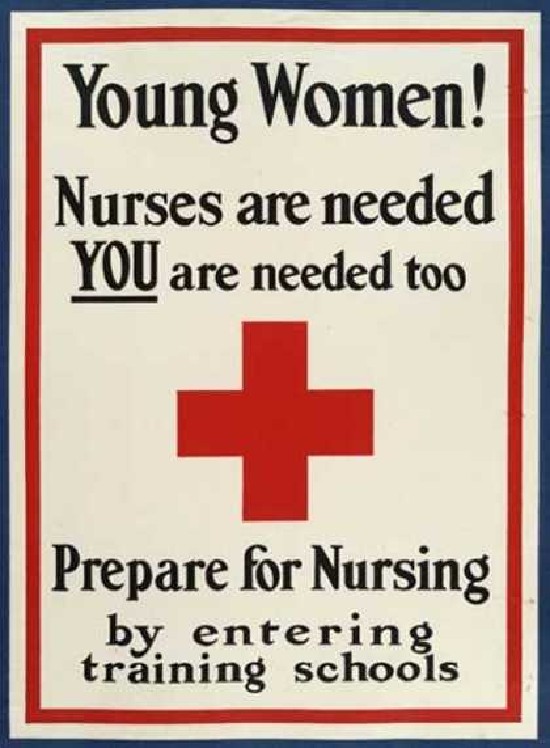
US army needed women too
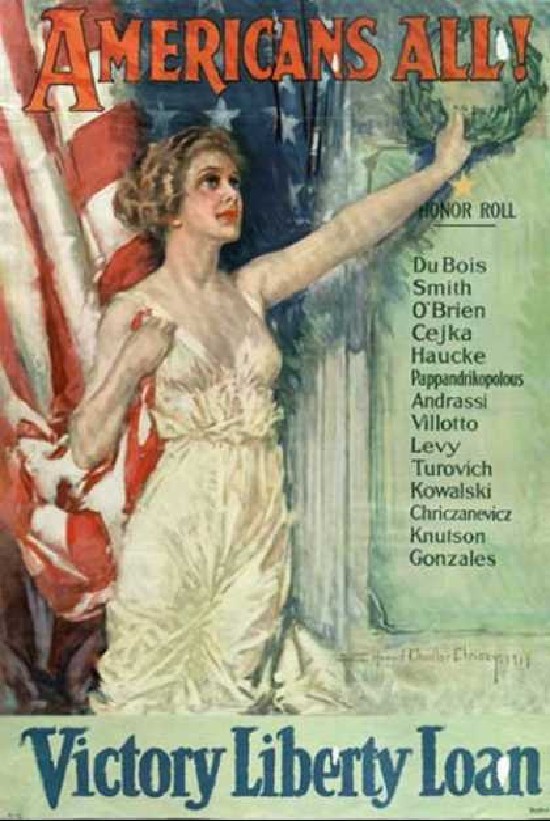
This Liberty loan promotion looked pretty hot in 1917. And it worked!
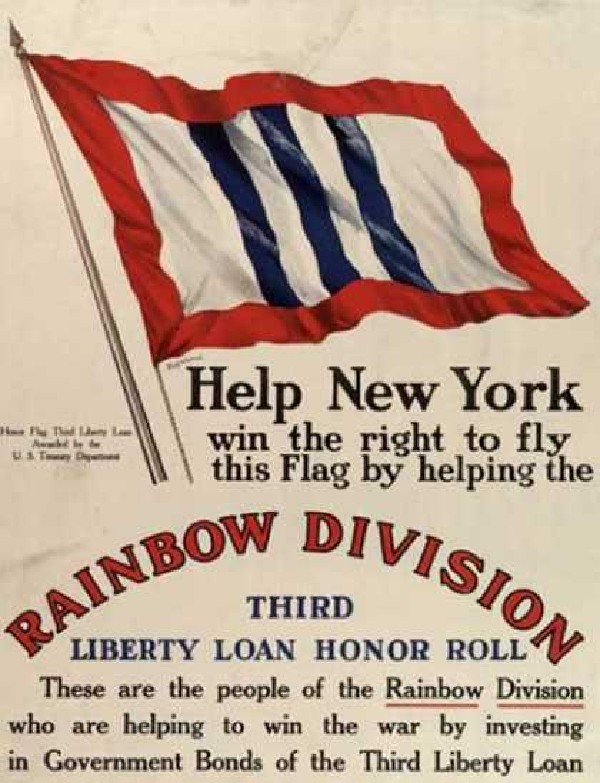
The people of the Rainbow Division helping to win the war by investing into loans
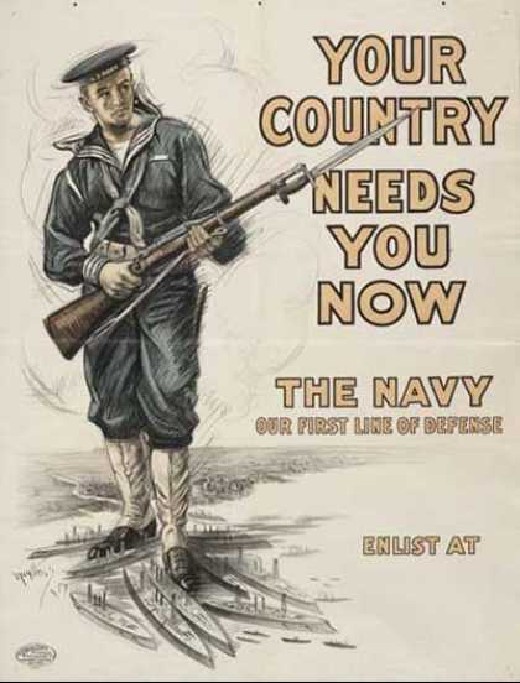
Country needed a lot of marines and navy recruits
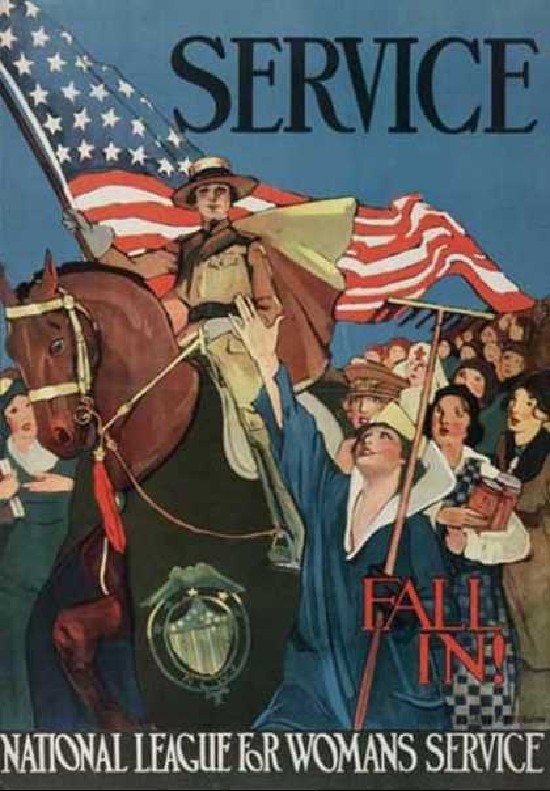
That’s how the emancipation became even stronger in US. Women will get their election right 10 years after WWI
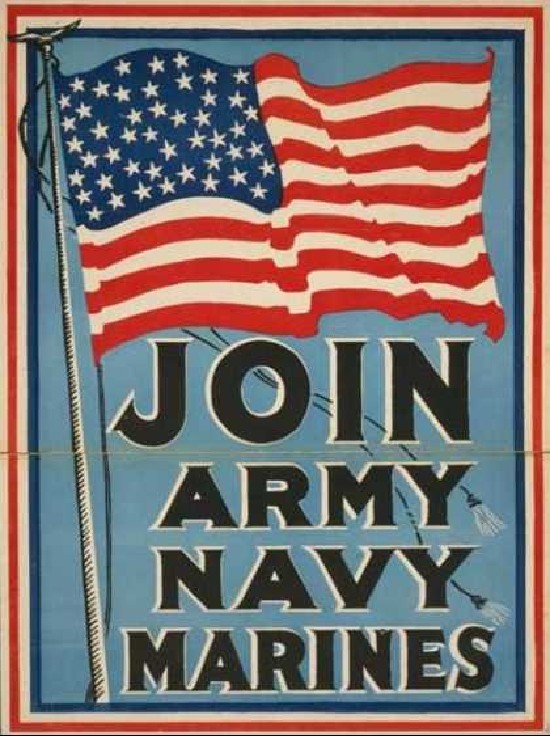
Another simple and effective US nave poster

Liberty is calling. And asking for billions of dollars. You could buy much more for those billions 100 years ago
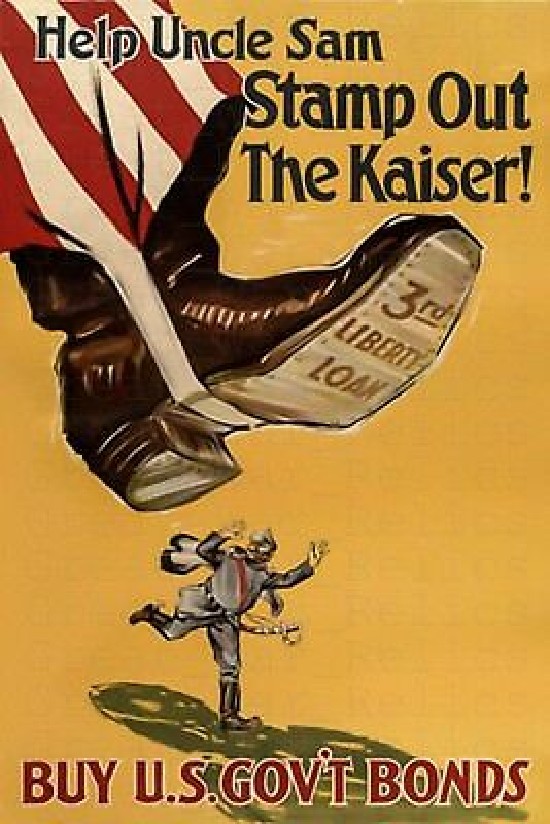
Not all of the US citizens knew that the Germany was ruled by the Kaiser during WWI
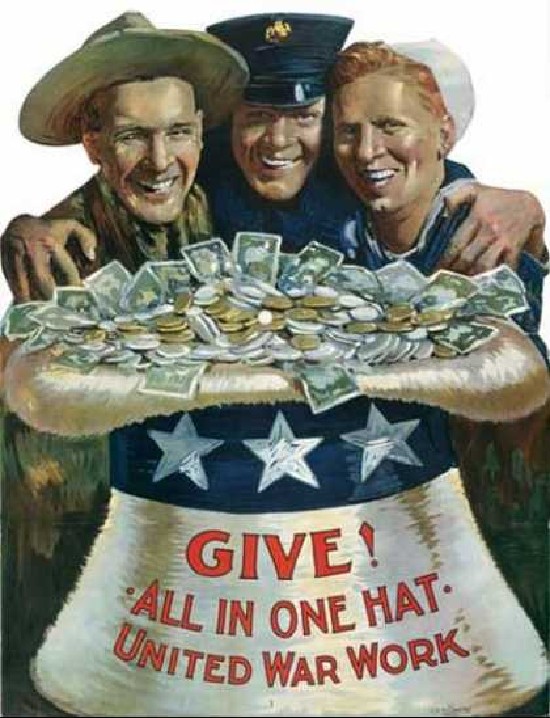
Investing into was is fun!
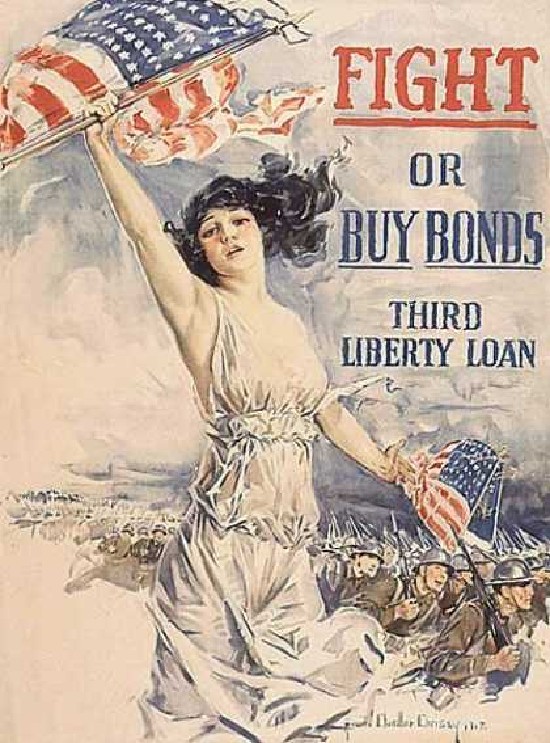
Another hot lady promoting fight for freedom
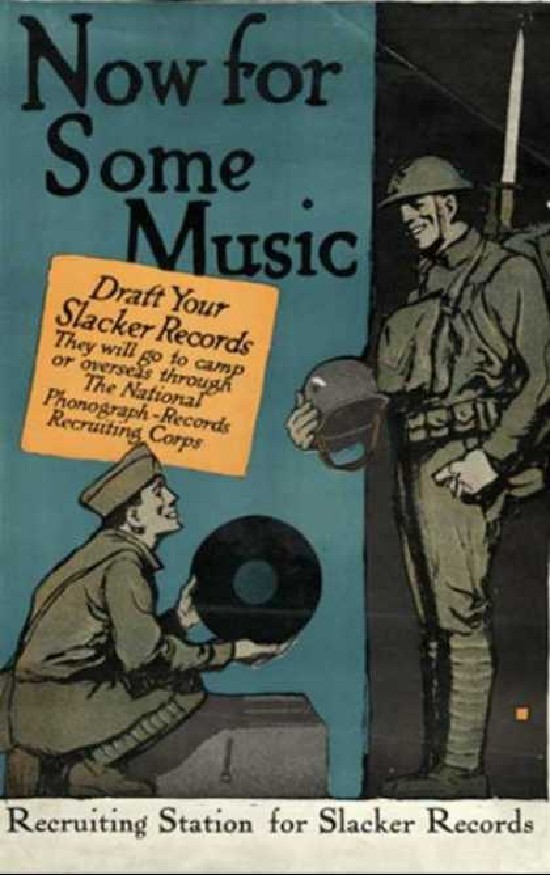
Supporting soldiers with records? Why not!
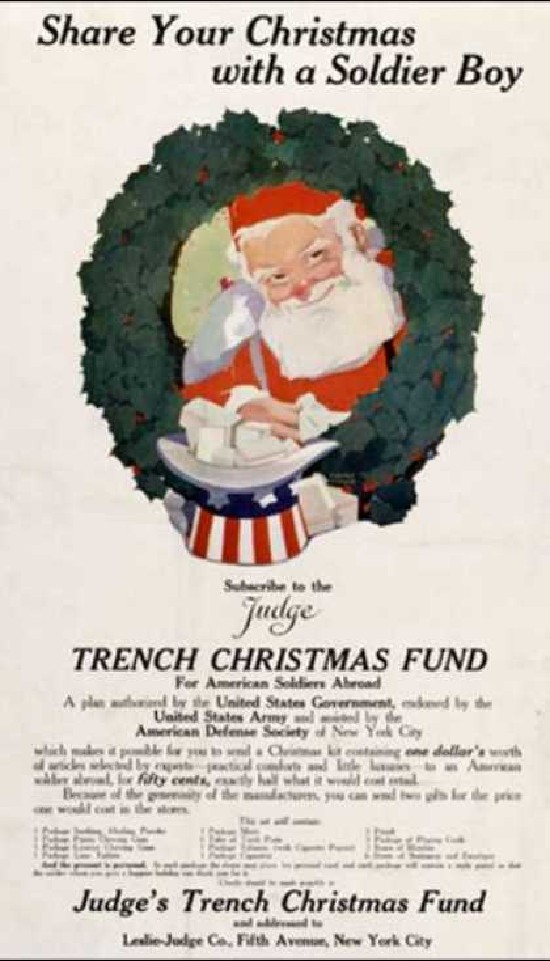
Santa was involved into propaganda too
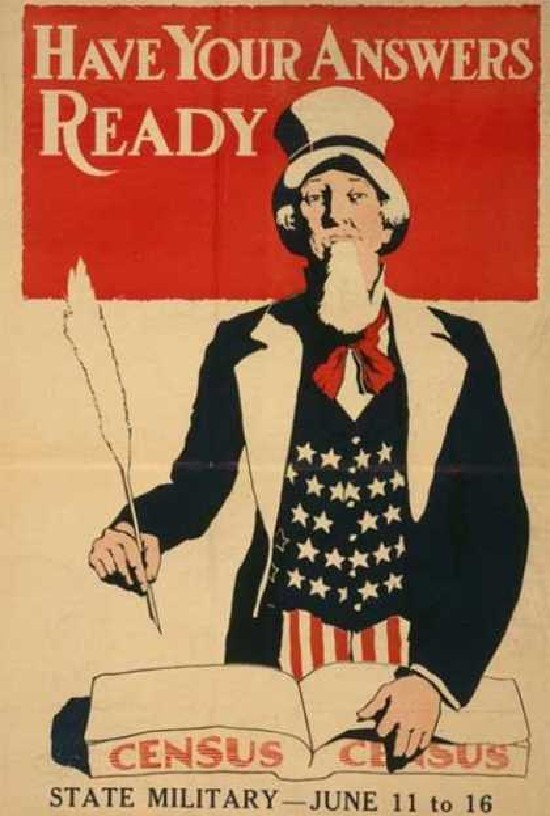
Have your answers ready poster
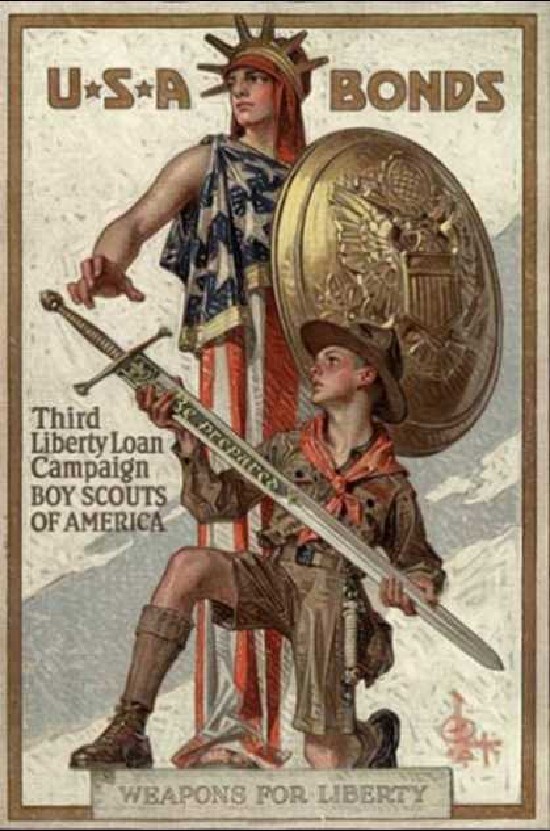
Boy scouts promoted Liberty loans too
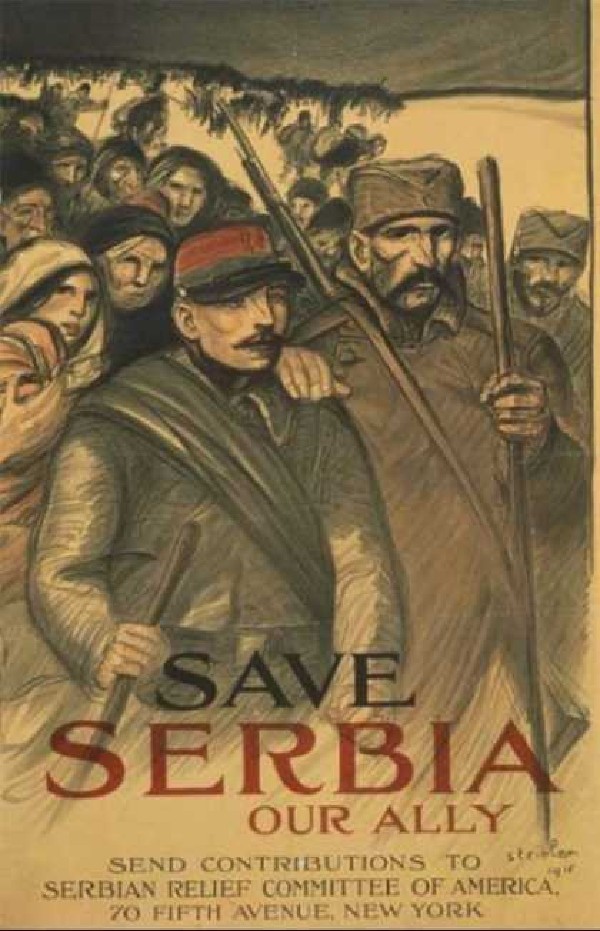
Not all of the US citizens knew about Serbia, but they had to save it

Everything is important during war times. Corn seeds are needed too
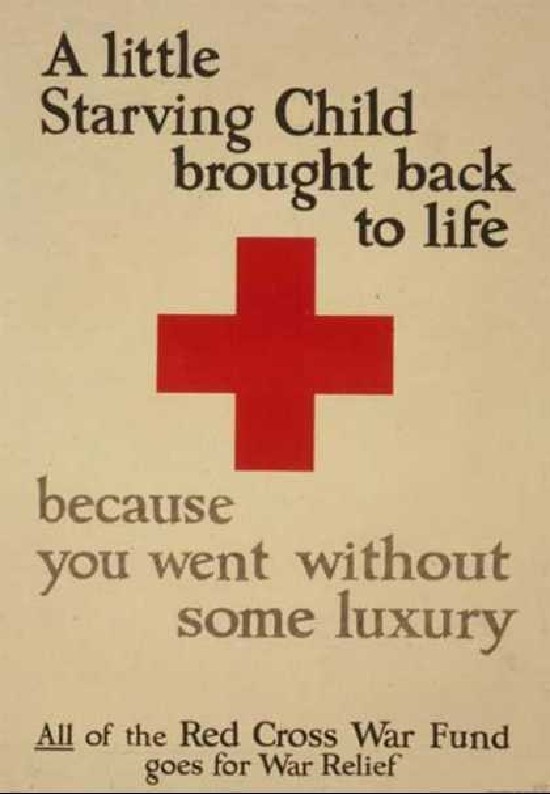
A liitle starving child brought back to life because you went without luxury
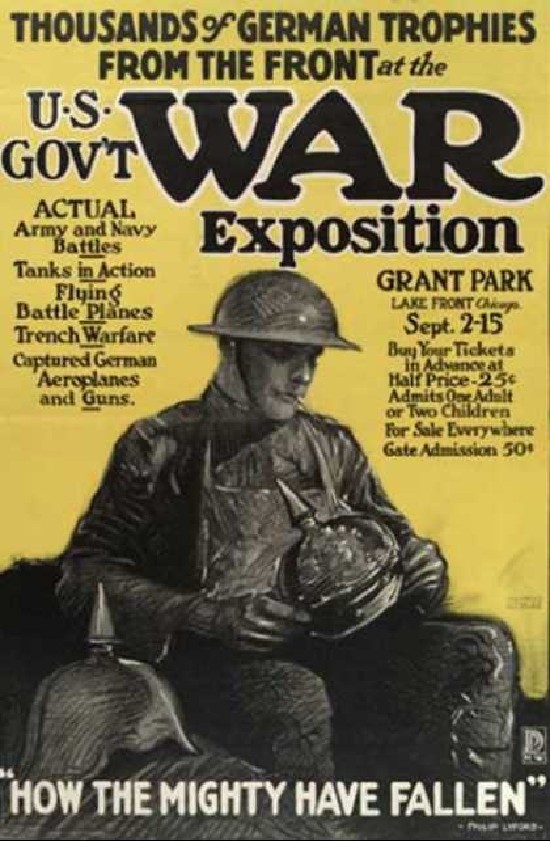
Сообщение US WWI propaganda posters появились сначала на Old Pictures.
]]>Сообщение Germany, 1923. Hyperinflation. Kids are playing with money packs because toy blocks are too expensive появились сначала на Old Pictures.
]]>
Germany, 1923. Hyperinflation made paper notes so worthless that these kids used them as building blocks. By November 1923, the US dollar was worth 4,210,500,000,000 German marks.
Why Germany was so poor after WWI
WWI ended on November 11, 1918, with the capitulation of Germany and its allies. The Versailles Peace Treaty of 1919 consolidated its declassified status: demilitarization, territorial concessions, loss of colonies and foreign investments, reparations. WWI battles didn’t touch Germany’s territory, and aviation at that time could not yet cause any serious destruction. However, Germany was severely exhausted by the war. The monarchy was crushed, and the fragile republic faced enormous economic and political difficulties. Politicians tried to relieve international obligations many times during the numerous summits and negotiations but failed.
The government used direct monetary emission, loading the Reichsbank (central bank) with its obligations. By the end of the war, the money supply exceeded the pre-war numbers by 5 times.

Kids playing with money blocks.
Germans never experienced heavy money inflation.
The prices began to climb in 1919. The inflation caused political turbulence in 1919-1922. By July 1922, the mass of banknotes had increased more than 7 times compared to the moment of the cease-fire. The price level increased 40 times, and the dollar exchange rate even 75 times. By June 1923, the money supply had increased by about 90 times, prices by 180 times, and the dollar exchange rate by 230 times.
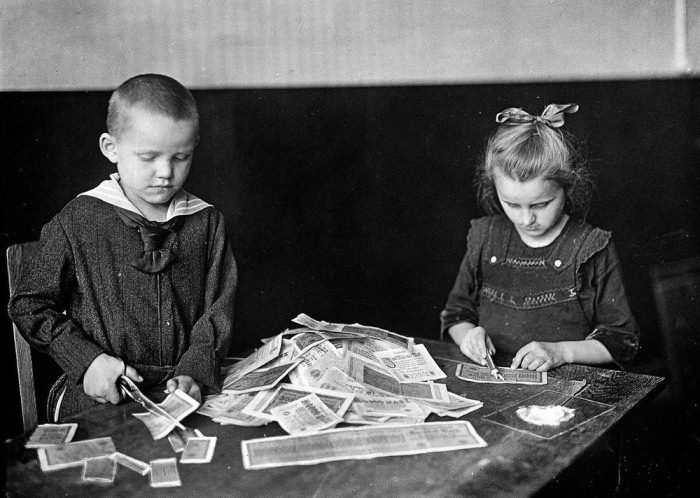
Kids spending their time with German money.
The inflationary agony began in the summer of 1923. In the four months before the end of November, the money supply increased 132,000 times, the price level increased 854,000 times, and the dollar exchange rate almost 400,000 times. The history of paper money did not know of such magnitude of depreciation; only inflation in Soviet Russia had a similar scale.
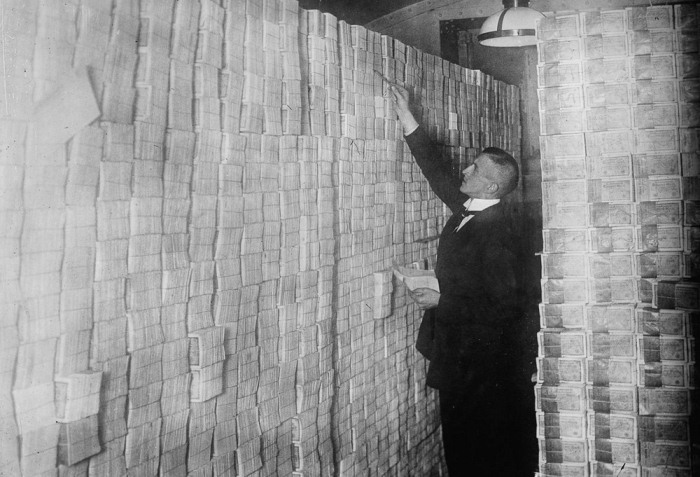
That’s what economists call ‘the money mass.’
How could kids play with money blocks?
Reichsbank banknotes in circulation by mid-November hit 500 quintillions. Every month, the government printed more and more banknotes. The most “expensive” in the end was the 100 trillion mark. True, it has “100 billion” printed on it. In fact, this banknote costs less than $25. The blocks of the ‘millions’ banknotes became useless.
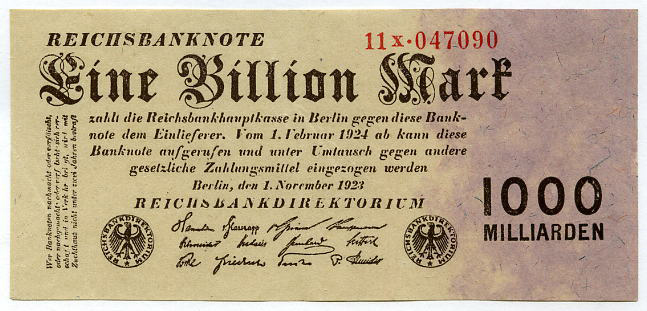
This kind of banknotes caused hyperinflation in Germany.
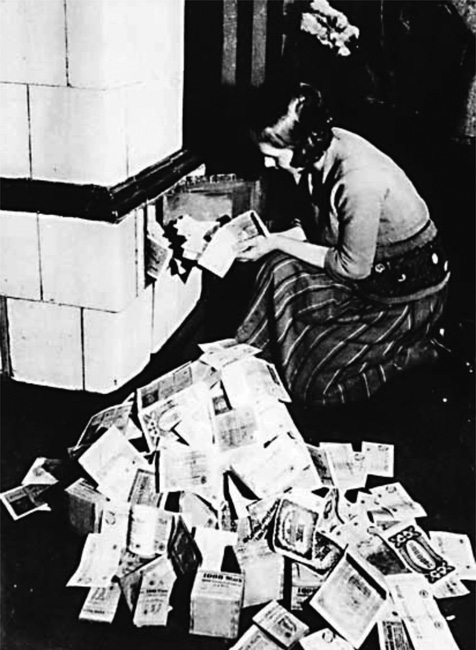
Yes, banknotes could be used at the fireplace.
Сообщение Germany, 1923. Hyperinflation. Kids are playing with money packs because toy blocks are too expensive появились сначала на Old Pictures.
]]>